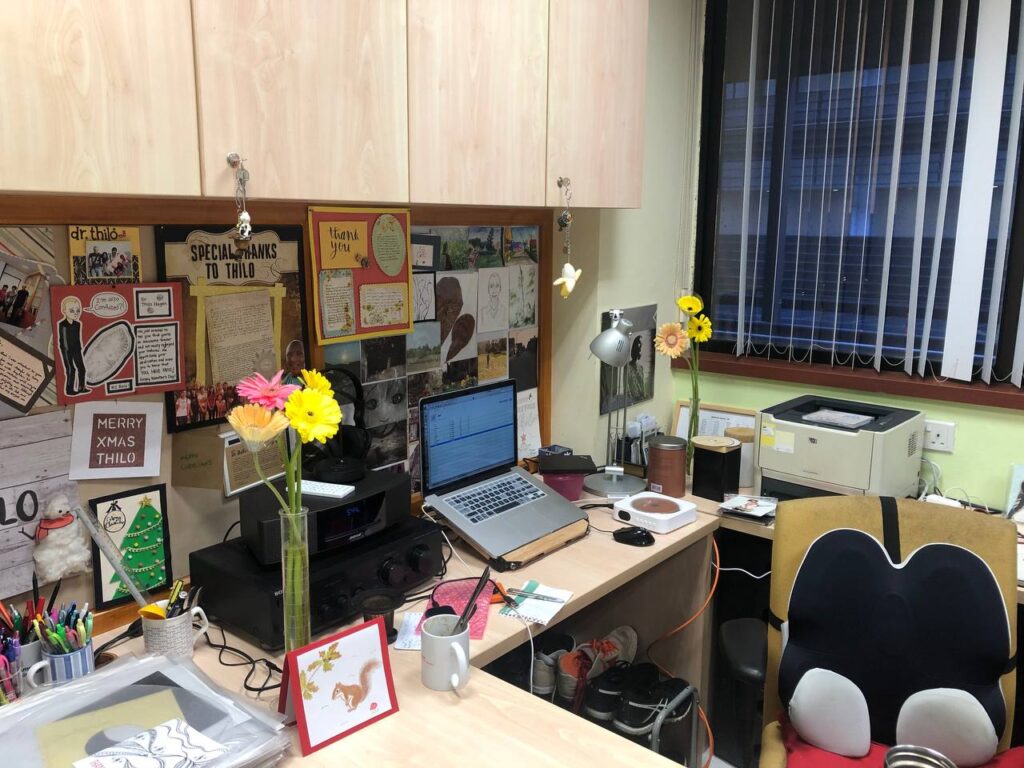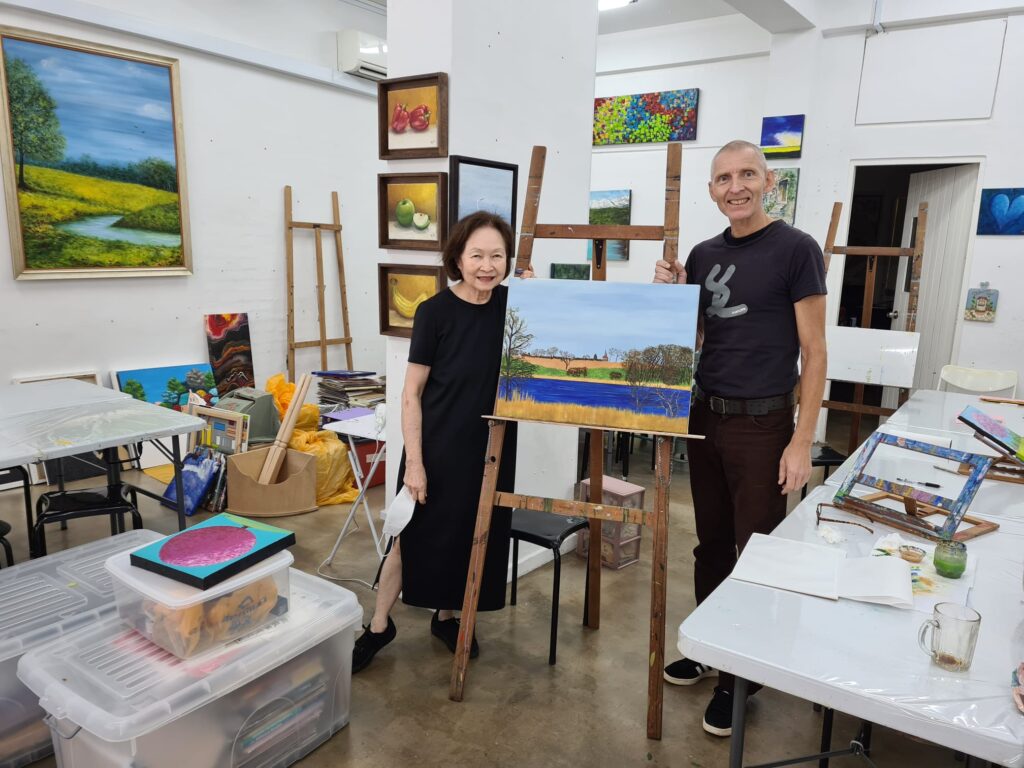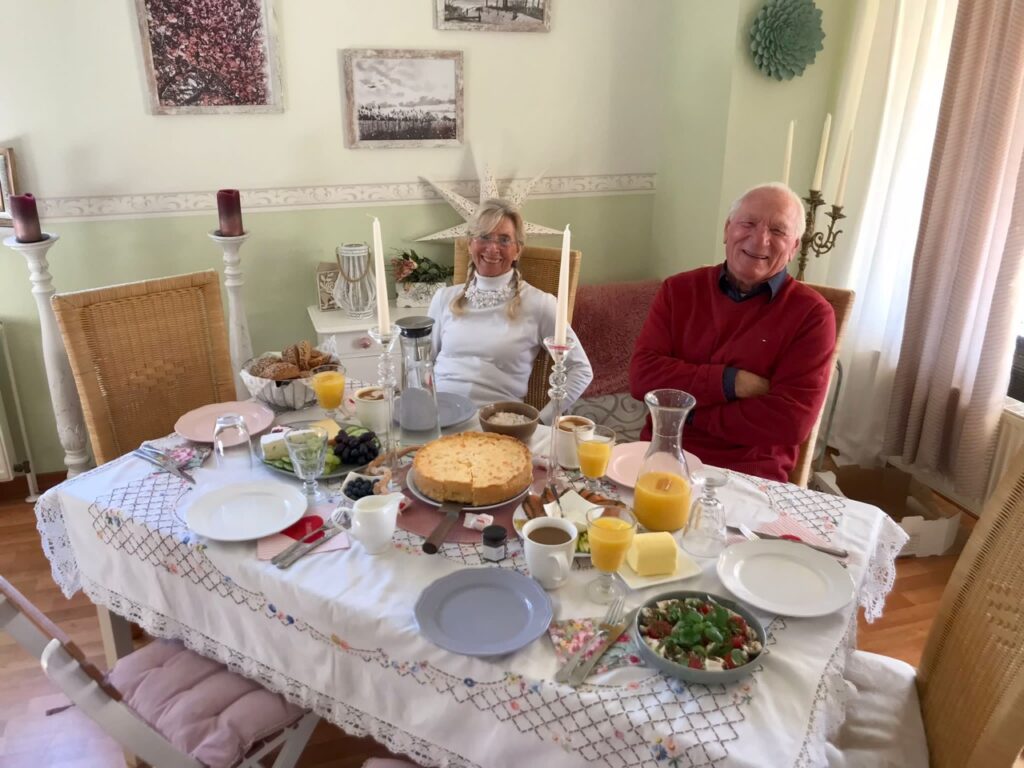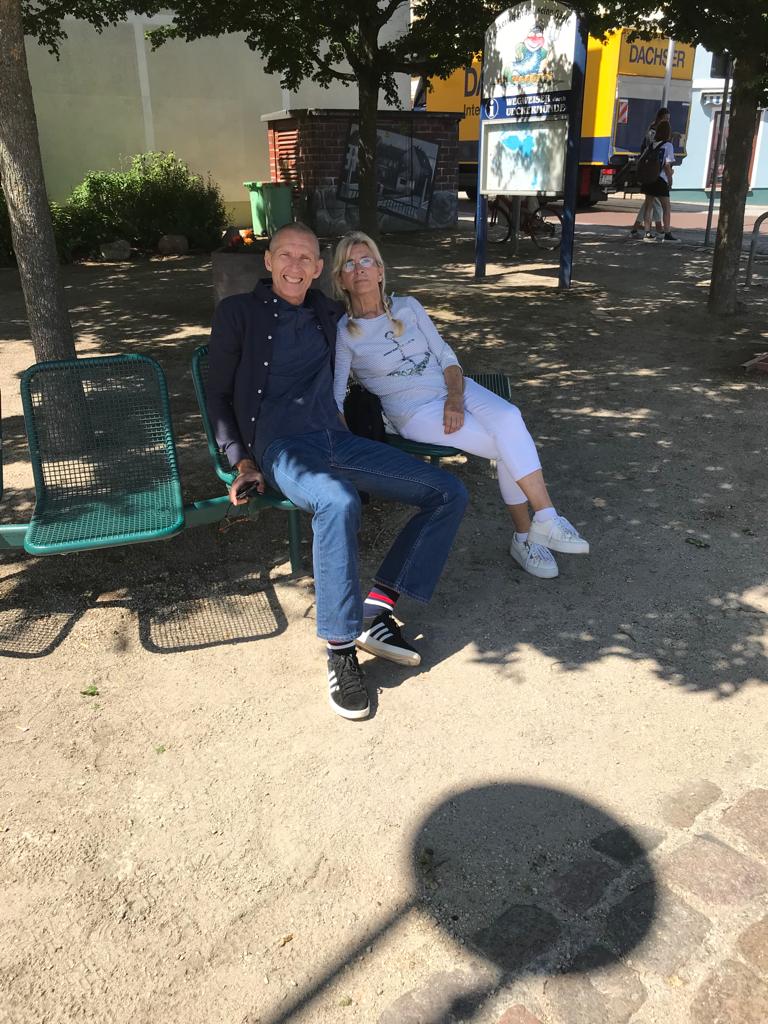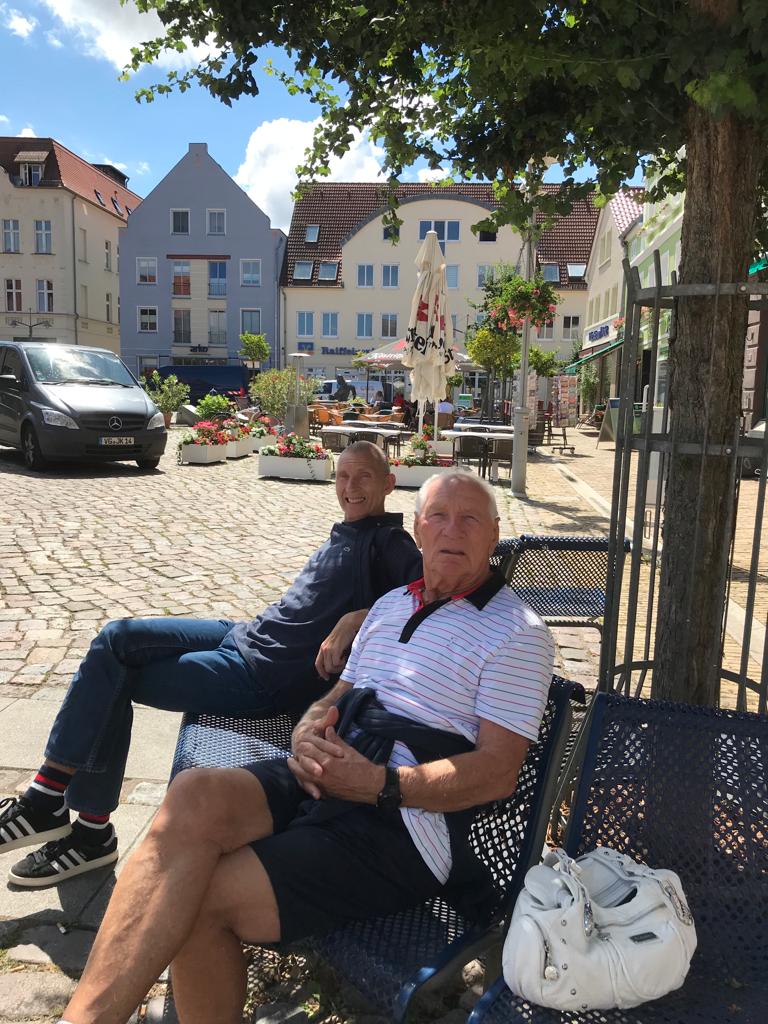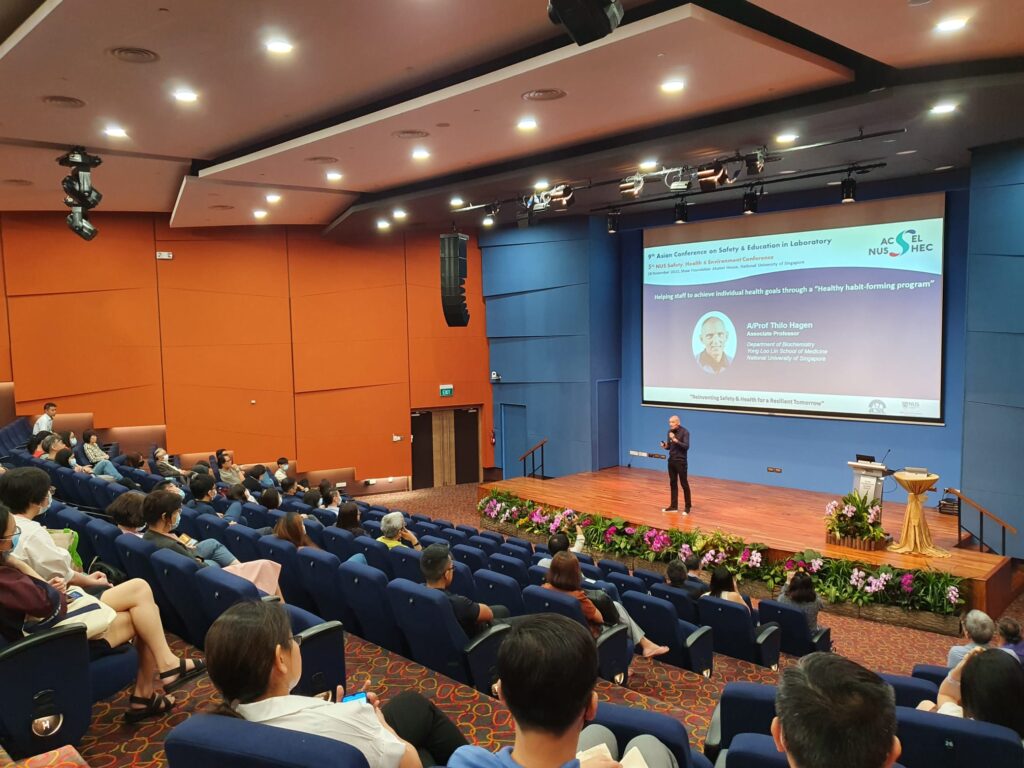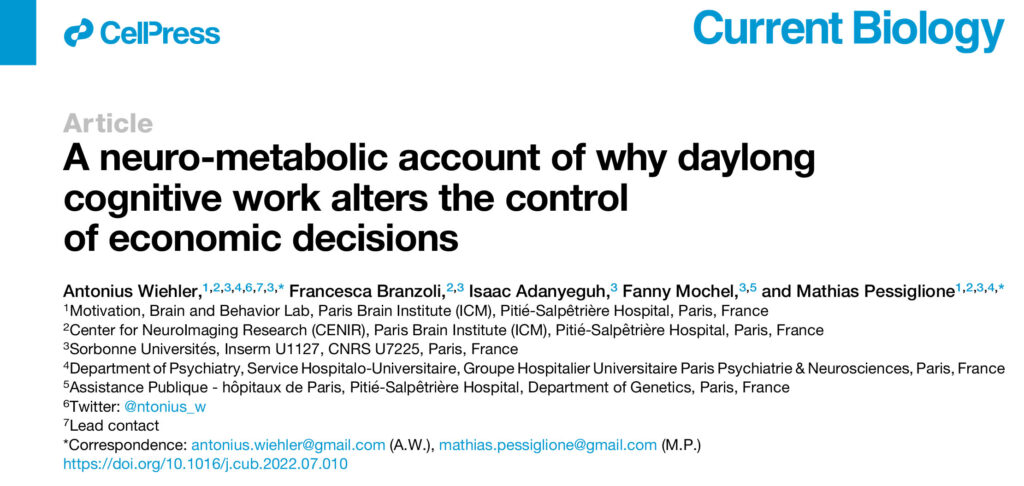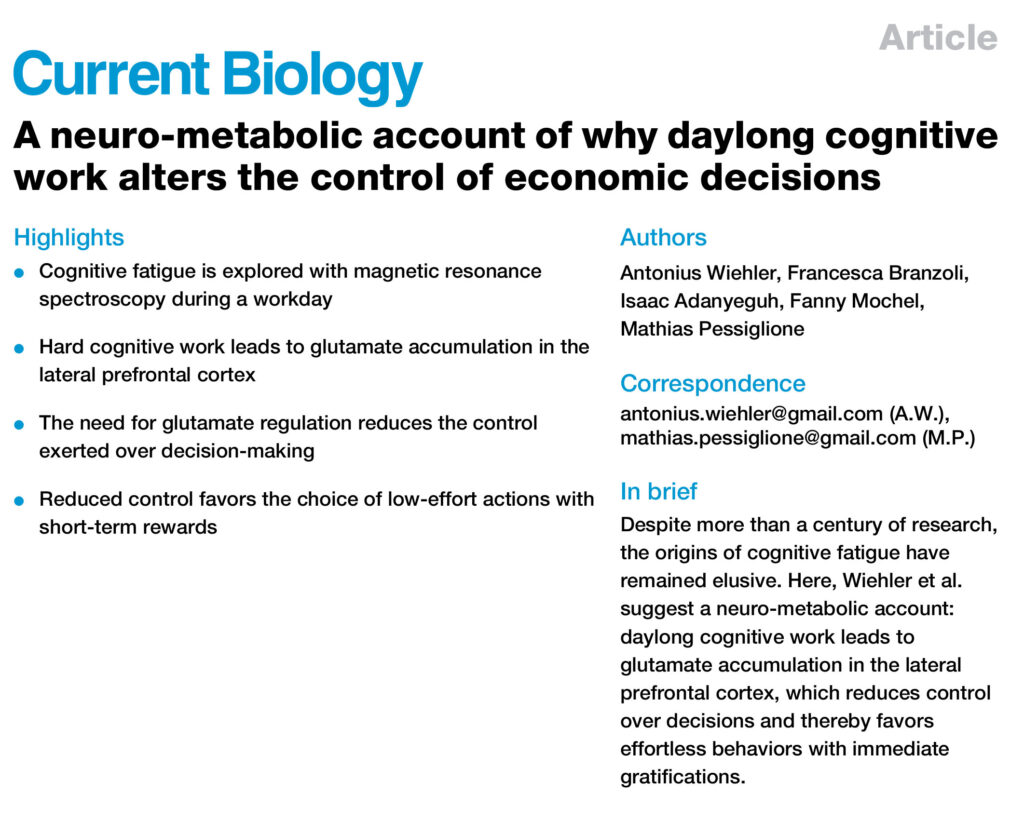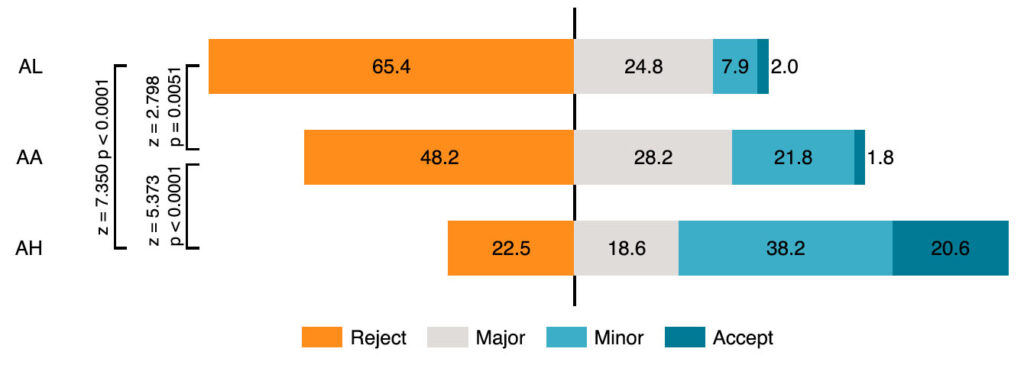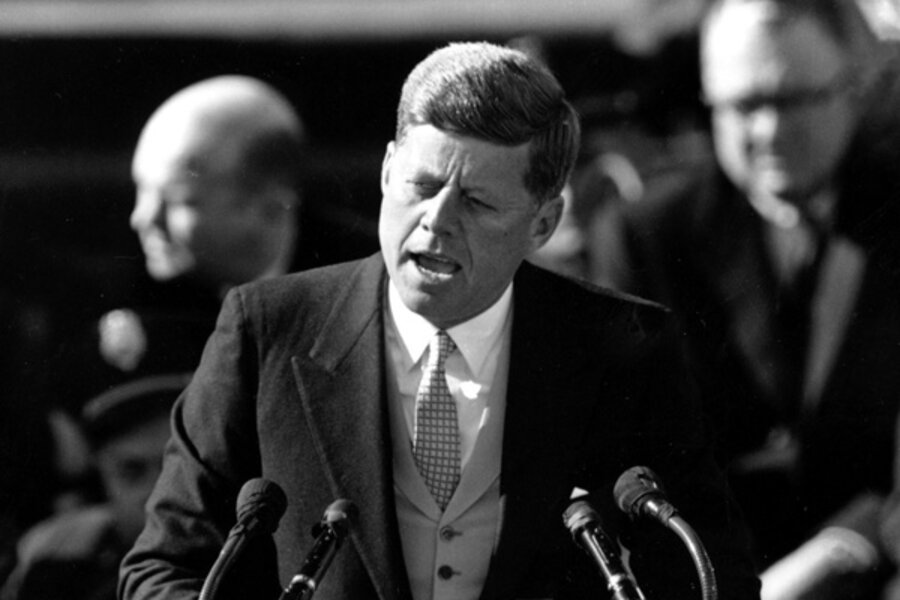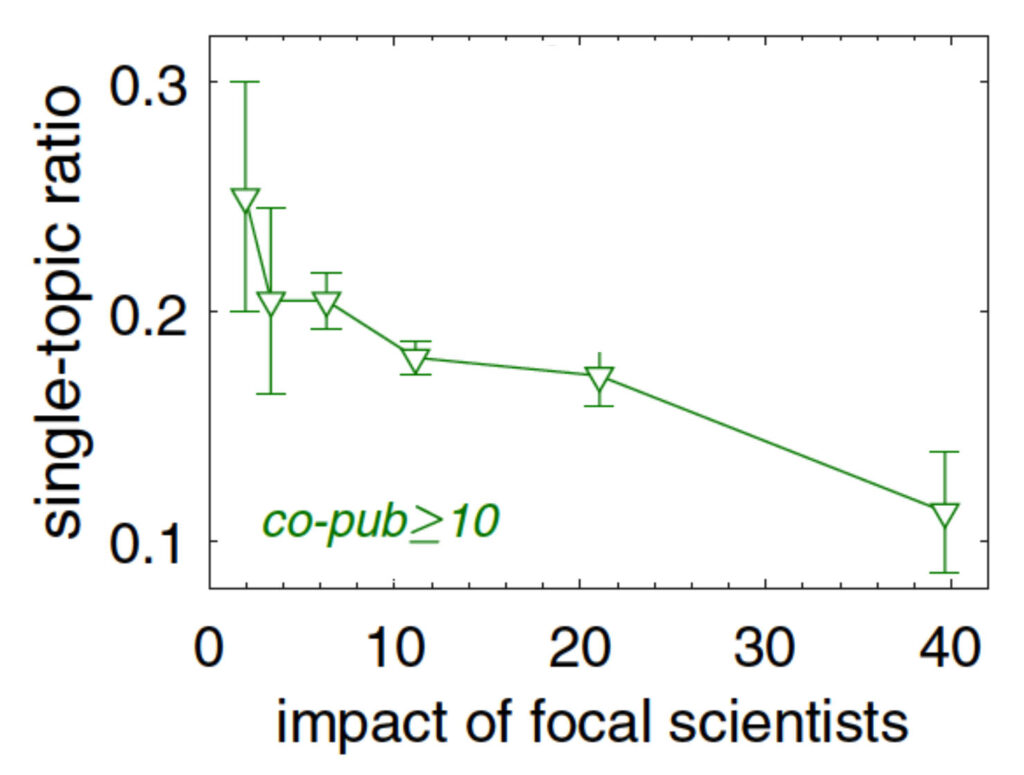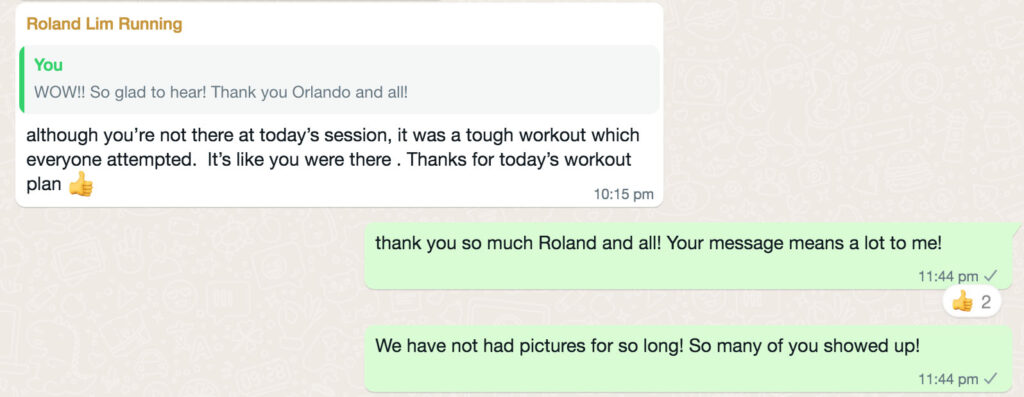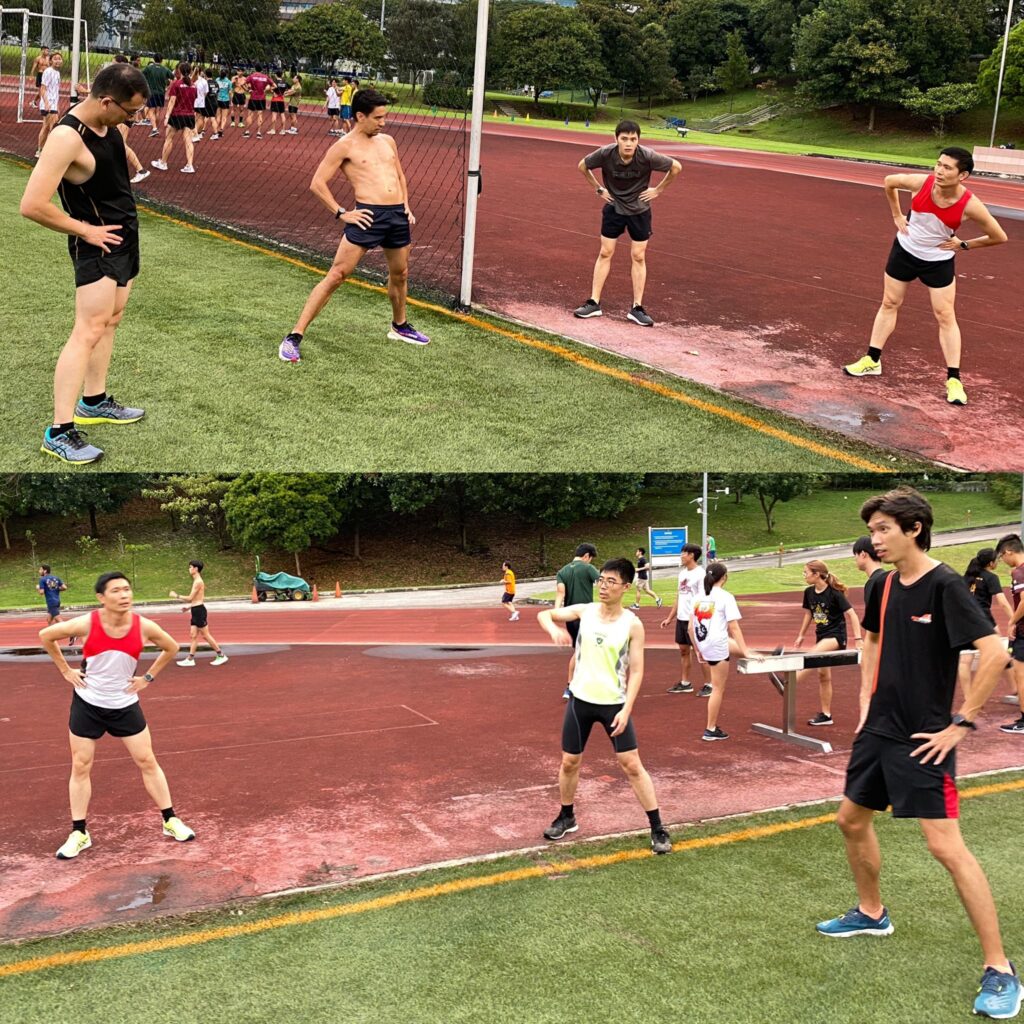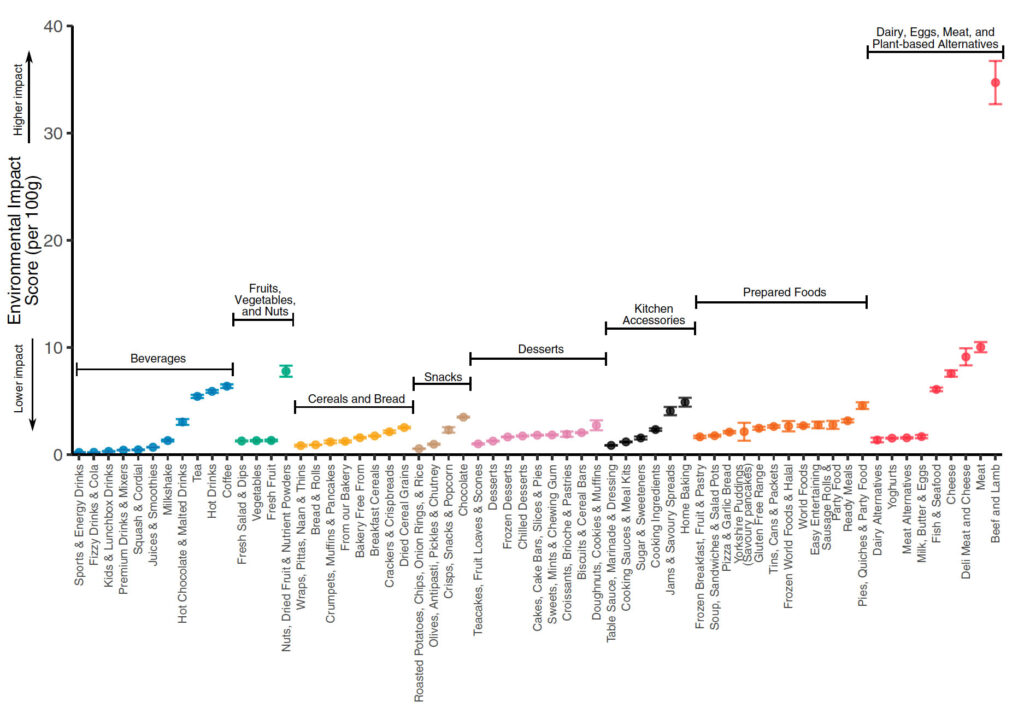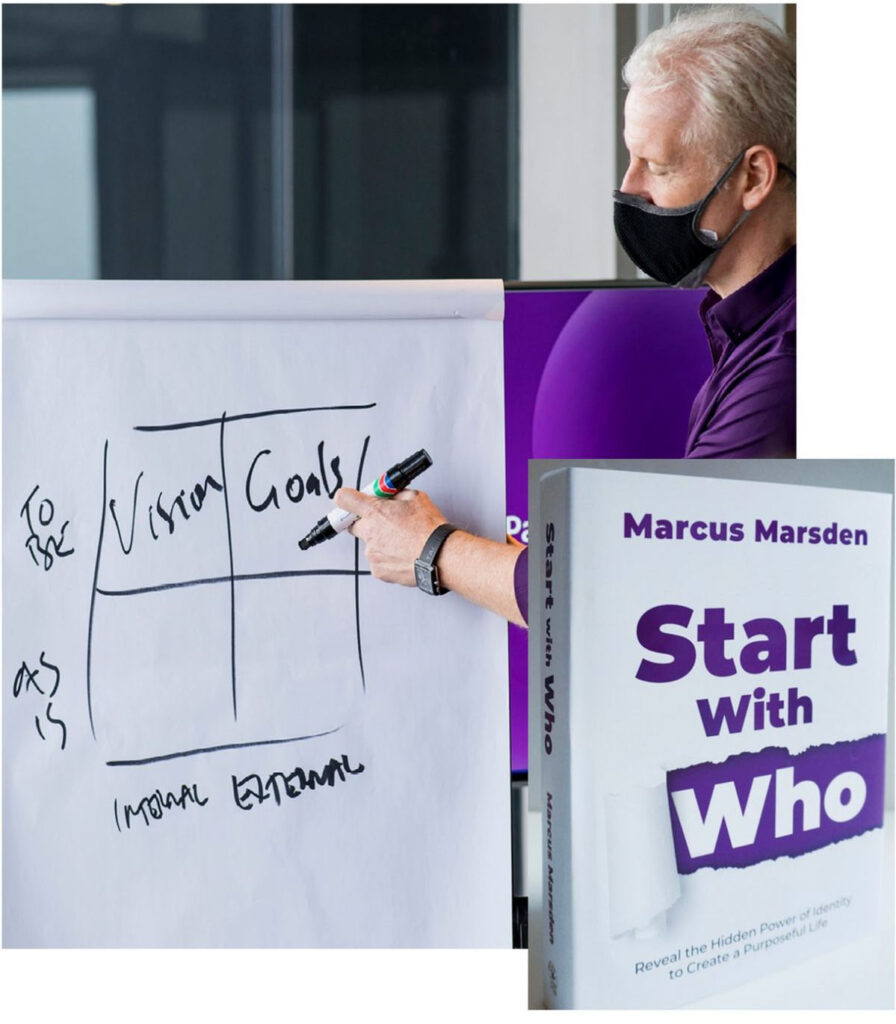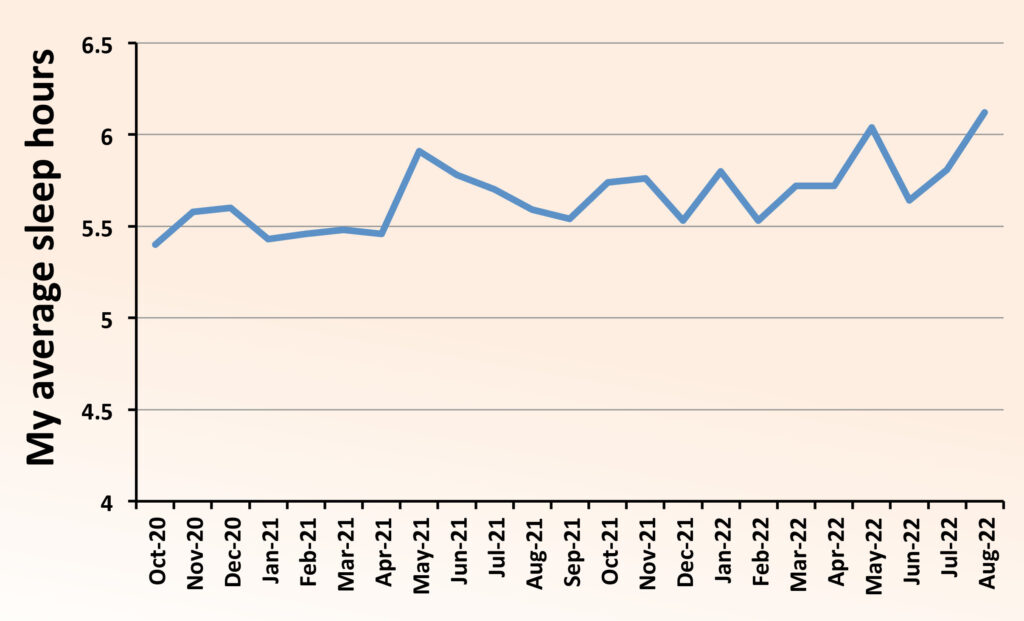WEEKLY HIGHLIGHTS 2022 SECOND HALF
HIGHLIGHTS FOR WEEK OF 26 DECEMBER 2022 – 1 JANUARY 2023
HIGHLIGHTS FOR WEEK OF 19 – 25 DECEMBER 2022

Making a writing assignment “formative”
HIGHLIGHTS FOR WEEK OF 12 – 18 DECEMBER 2022
HIGHLIGHTS FOR WEEK OF 5 – 11 DECEMBER 2022

And this is my favorite Ted talk. There is still a huge gap, but hopefully with time I can succeed in closing it.
HIGHLIGHTS FOR WEEK OF 28 NOVEMBER – 4 DECEMBER 2022

HIGHLIGHTS FOR WEEK OF 21 – 27 NOVEMBER 2022
HIGHLIGHTS FOR WEEK OF 14 – 20 NOVEMBER 2022
One highlight this week was our departmental leather making staff welfare event at the Crafune Leather Craft workshop in Haji Lane in Bugis.

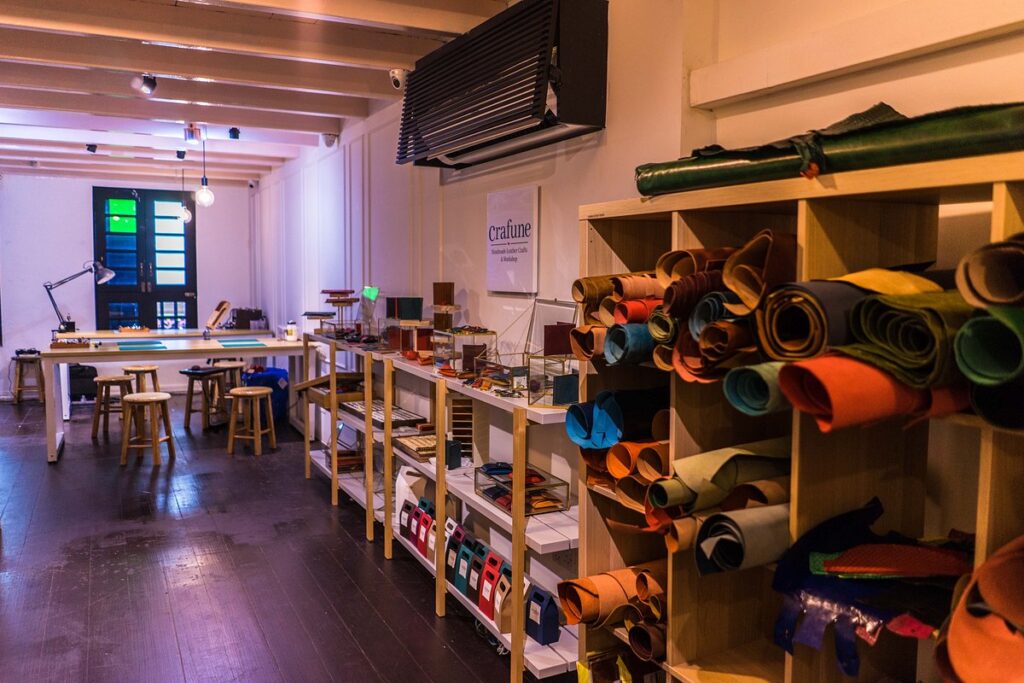
This is the lanyard I made for myself.
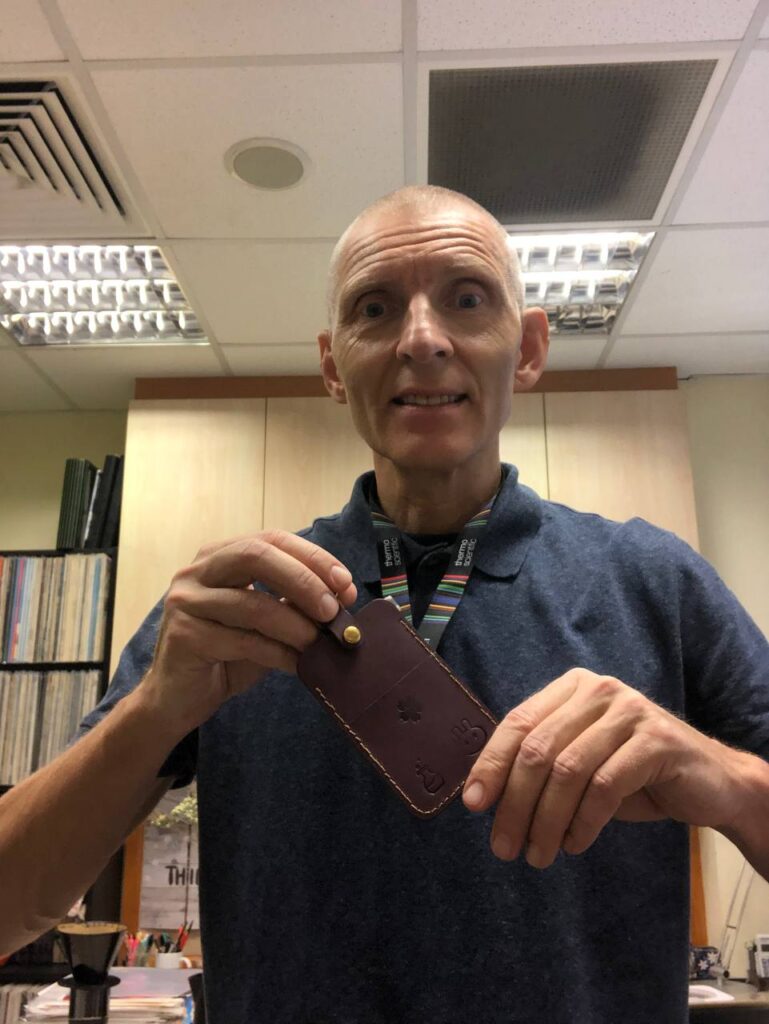

HIGHLIGHTS FOR WEEK OF 7 – 13 NOVEMBER 2022

HIGHLIGHTS FOR WEEK OF 31 OCTOBER – 6 NOVEMBER 2022
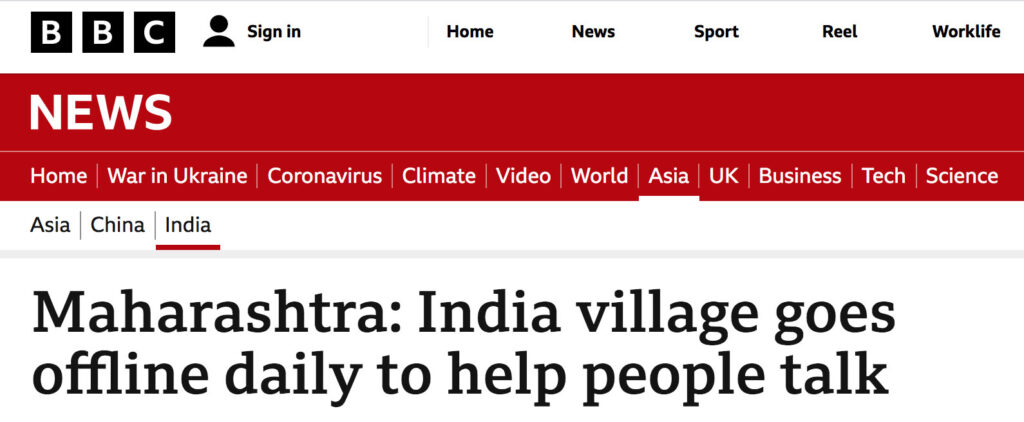
HIGHLIGHTS FOR WEEK OF 17 – 23 OCTOBER 2022
HIGHLIGHTS FOR WEEK OF 10 – 16 OCTOBER 2022

Assessing students objectively OR subjectively?

HIGHLIGHTS FOR WEEK OF 3 – 9 OCTOBER 2022
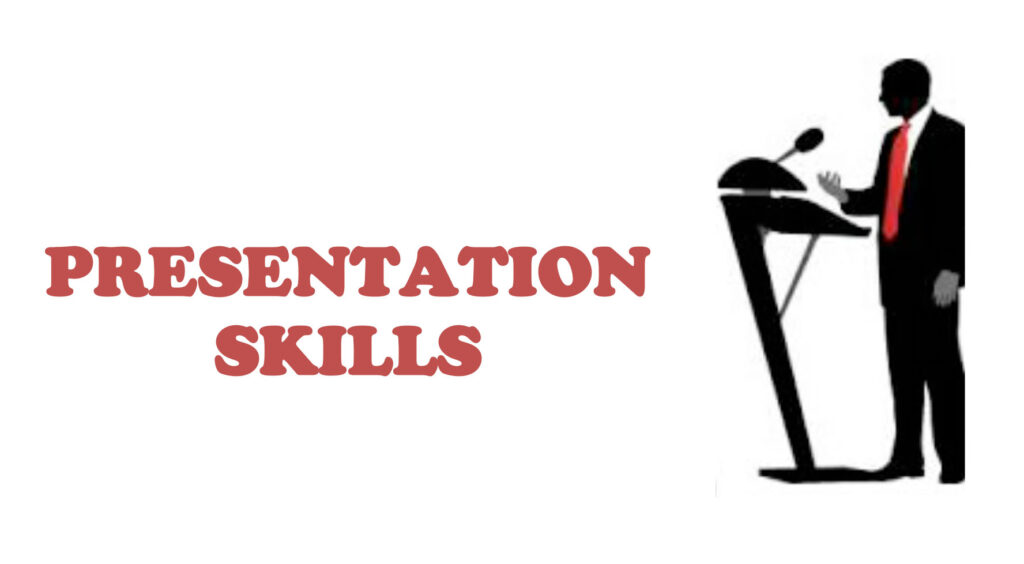
HIGHLIGHTS FOR WEEK OF 26 SEPTEMBER – 2 OCTOBER 2022

HIGHLIGHTS FOR WEEK OF 19 – 25 SEPTEMBER 2022
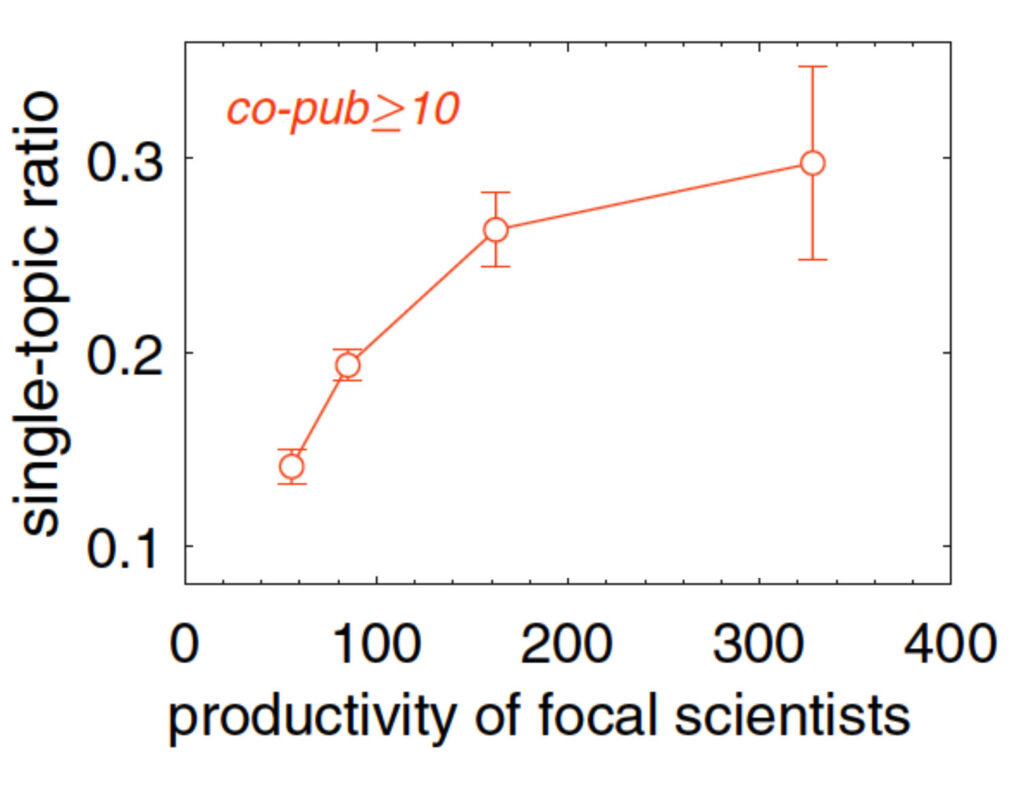
The fraction of single-topic collaborators (among those having at least 10 co-publications) for scientists with different productivity. More productive scientists have a significantly greater fraction of single-topic collaborators.
HIGHLIGHTS FOR WEEK OF 12 – 18 SEPTEMBER 2022

HIGHLIGHTS FOR WEEK OF 5 – 11 SEPTEMBER 2022

HIGHLIGHTS FOR WEEK OF 29 AUGUST – 4 SEPTEMBER 2022

HIGHLIGHTS FOR WEEK OF 22 – 28 AUGUST 2022

HIGHLIGHTS FOR WEEK OF 15 – 21 AUGUST 2022
HIGHLIGHTS FOR WEEK OF 8 – 14 AUGUST 2022

HIGHLIGHTS FOR WEEK OF 1 – 7 AUGUST 2022
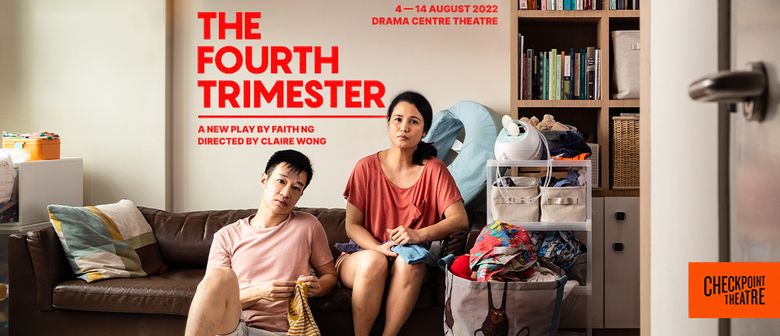
“The Fourth Trimester” theatre play and happy family relationships
HIGHLIGHTS FOR WEEK OF 25 – 31 JULY 2022

HIGHLIGHTS FOR WEEK OF 18 – 24 JULY 2022
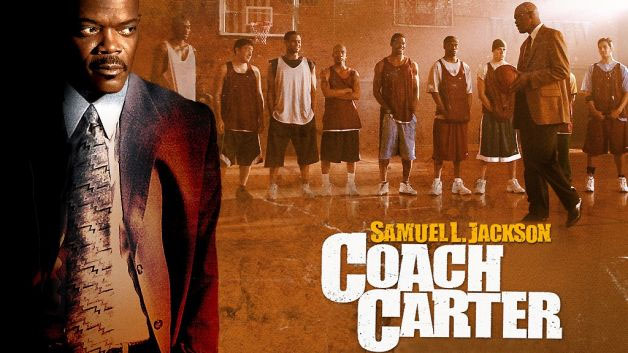
HIGHLIGHTS FOR WEEK OF 11 – 17 JULY 2022
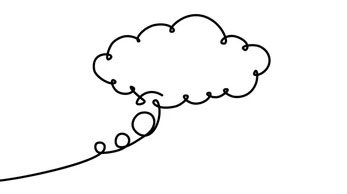
It is rare that we still remember our dreams in detail when we wake up. It is even rarer if our dream teaches us an important lesson, like this one that I had while being back home in Germany.
This week I published a new blog post – “A case for avoiding convenience and seeking challenges”
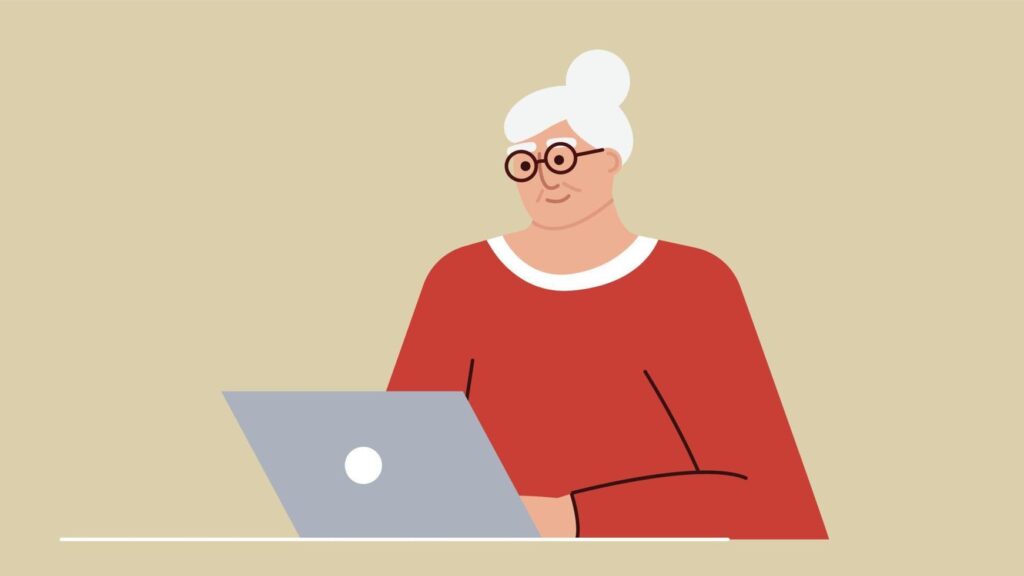
After a 3 year hiatus, I was able to travel to Germany again for Christmas! It was wonderful to spend time with my parents, going for walks and playing cards, including our newly discovered Wizard game.




Taking a break for a week was also a good opportunity for reflection. I rediscovered the importance of my mindset in everything I do and think about. The weather was cold in Germany. Going outside felt difficult and I often questioned if I could ever get used to cold weather again. Until a neighbor reminded me that if I want to get used to the weather and accept it as part of the changing of the seasons, I can get used to it. But if I keep telling myself that I am unable to tolerate the weather, I likely will never feel comfortable.
I also rediscovered the need to bring joy into what I do and not to focus too much on the results. And I discovered a key to achieve important goals – to surround myself with people who do what I aspire to. Ironically, I discovered this advice precisely because I did just that, talk to someone who does things that are related to some of my own goals.
For instance, if I want to coach in the area of health, I need to move in circles where people are health-conscious. And I need to start being in touch with other coaches. This seems like an obvious lesson, but sometimes we cannot see the forest for the trees.
Although Germany looks grey at this time of the year, it only makes the re-emergence of spring more amazing and exciting.

Spring in Berlin

Spring in Berlin
On a different note, our UROPS student Diya ended up getting an “A” for her UROPS project during the past semester on NRF2 and hypoxia, which made me very happy, too!
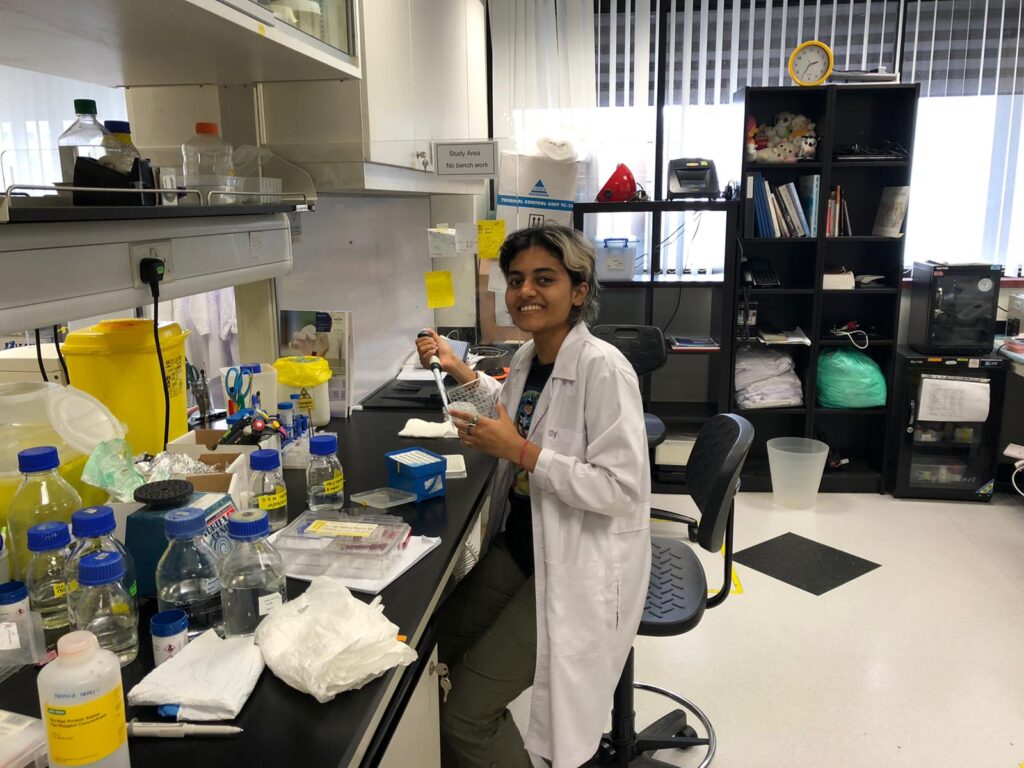

HIGHLIGHTS FOR WEEK OF 19 – 25 DECEMBER 2022

Making a writing assignment “formative”
The teaching semester is over and the postgraduate module that I am coordinating went well. I have continued my “tradition” of trying at least one new thing every semester. Over the years, this approach has helped me to gain a lot of ideas about teaching that are actually based on my own experience, and not on some scholarly pedagogical articles.
My new “thing” last semester was to make our writing assignment formative, in other words, give students the chance to re-do their assignments. The whole process included an initial submission of the assignment, a formative evaluation by myself with personalized feedback, two writing feedback classes and finally a resubmission of the writing assignment by the students.
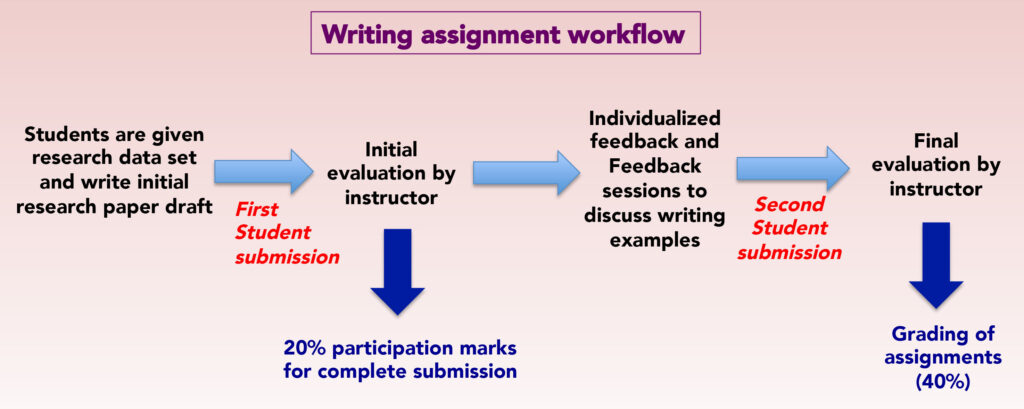

For the second assignment in the course, a “3 min thesis” presentation (= a short description of a student’s PhD project geared towards a non-expert audience), we have been including a formative component for several years. Here, students give an initial presentation to which everyone (lecturers and the other students) gives feedback. The students then revise their talk and present again.
Over the years, this formative set-up of our presentation assignment has proved exceptionally effective. We as lecturers never fail to be amazed about the improvements that students exhibit during the final round and the amazing standards that many students achieve with their revised presentations. In fact, many of the talks are so engaging that I am left wishing I could present so well. What is more, the process of providing feedback after the initial presentations is a lot of fun. I personally always enjoy thinking about how to improve a presentation. It is like problem-solving and involves a lot of creativity.
After introducing a similar format for our writing assignment, there were a number of questions that I was curious about:
Did the formative setup of the writing improve student learning?
Did the students themselves think that the process was helpful or did they think of it primarily as more work.
And finally, how did it affect my workload?
With regards to the first question, there were obvious improvements in the final assignment submission compared to the initial one. This is not surprising, given that I gave personalized feedback in the form of annotations. The real test of the effectiveness of the approach would be to let the students write a whole new research paper manuscript. However, this would mean a lot more work for the students (and for me as well – see below). Hence, it is likely that students would not be too enthusiastic about this approach.
I noted that the extent of improvement in the writing varied from student to student. In some cases, the improvement was remarkable. This highlights that whether or not the formative round is helpful is to a large extent dependent on the students themselves, on how much effort they spend on revising their manuscript based on the personal and general feedback comments.
Hence, the formative stage is an opportunity for students to improve, but no guarantee that the students will make use of this opportunity. The reason is in part because there is no strong external motivation. As course coordinator, I provide some incentive by grading the final assignment. However, the effectiveness of this incentive is limited because postgraduate courses in our school are now all Pass or Fail based and grades are generally not a strong incentive for graduate students.
In contrast, in our final round of the presentation assignment there is a strong external motivation: The quality of the final presentation is visible to everyone else in the class including both the lecturers and the other students. Hence, there is some level of performance and peer pressure to deliver a good presentation. This is likely one reason why the quality of the final presentations is so good.
This then raises the obvious question, can we improve the incentive of students to put more effort into their final writing assignment submission? In analogy to the final presentation round, we could announce that we will give a small prize to the student with the best research paper assignment or to the student who improved the most. We could also make all manuscripts accessible to the other students together with the awarded total marks. These are ideas that we could contemplate for the future semester.
In the absence of an objective answer to the effectiveness of the formative feedback approach, the next best possible answer could possibly be given by the students themselves. In a survey that we conducted, we asked students to what degree the formative feedback process helped them in improving their presentation and writing skills.
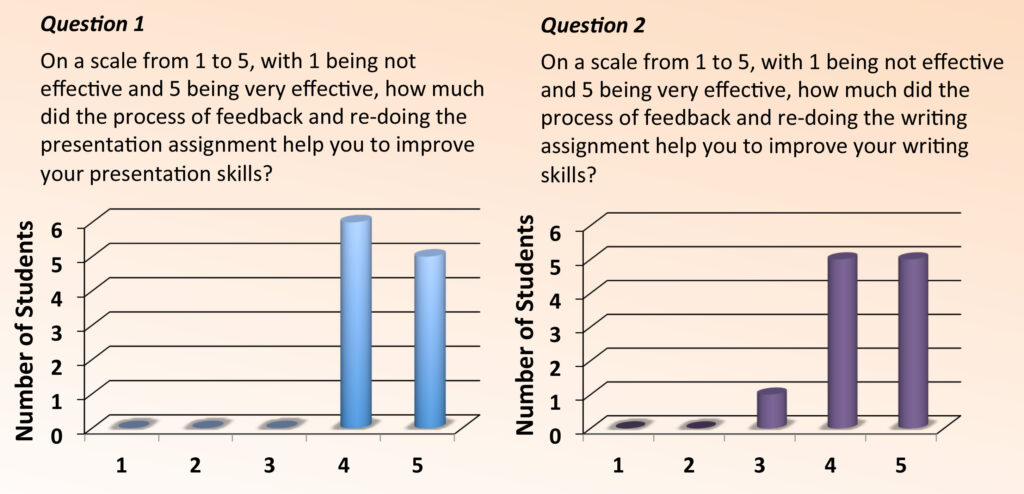

Consistent with our own perceptions as lecturers, the students felt that the presentation feedback round was useful. Encouragingly, the students gave an almost equally favorable evaluation of the writing assignment feedback round.
When looking at these feedback results, it is important to keep in mind that the students had to do two submissions, which equalled to almost double the amount of work. Yet, they still gave a favorable response in the anonymous survey. Hence, the students likely truly felt that the assessment format was helpful.
Finally, what about my workload? Compared to previous years, the total required time on my side was about the same, despite having to mark the assays twice. This may seem surprising. The reason is because in the two submissions I focussed on different things. In the first submission, I only focussed on providing feedback and not on grading. In the second submission, I only focussed on checking if the students have applied the feedback and then assigned some marks.
What was hugely different was my experience of the marking process. Marking the first submission was interesting and fun because I had to figure out what was wrong. I was highly motivated because I knew that the students will be applying my personal feedback and because I get to talk about individual examples in the writing feedback sessions. Not having to grade the initial submissions reduced the stress and pressure that I usually feel when marking assignments. Grading feels stressful because I feel the need to justify my grades based on the provided feedback, because I need to be objective and fair and because I need to maintain the same standard throughout the marking process. Anyone who has graded assays knows how difficult this is.
On the other hand, when it came to the grading of the final submissions, I no longer felt this pressure. My main marking criterion became whether the students had applied the feedback and whether this resulted in a good assignment. And it was interesting to see to what degree the students had improved.
In summary, in the new format, the whole marking and feedback process became more meaningful and fun. The marking was more spread out and less stressful. It became much easier to motivate myself to mark the assays.
I am happy I tried something new because it has led to make the module more effective and meaningful, for both the students and myself!
Next year, the new “thing” will be to practice impromptu speaking without using filler words at the beginning of each class. I am already excited to see what improvement this will bring over the course of the semester.
HIGHLIGHTS FOR WEEK OF 12 – 18 DECEMBER 2022
The Year 2022 in (some) Pictures
I discovered what a difference some flowers in my office make!
I took some painting classes.
Mask wearing ended.
I visited Changi point and Pulau Ubin a few times, but should to more.
Weekly skype calls with my parents,
and being able to visit them again in person!
And I learned about giving better presentations.
Something very special that happened to me this year was receiving from my parents (and prepared by my uncle) a video of myself when I was four or five years of age. While having videos of our younger self is very common nowadays, it is something extremely rare when I was young. Hence, seeing myself in a video from 50 years ago is something very special.
Watching me at this young age makes me think of a song that I have been listening to recently, Willie Nelson’s rendition of “Yesterday when I was young”.
Willie Nelson sings:
Yesterday, when I was young
The taste of life was sweet as rain upon my tongue
A tease of life as if it were a foolish game
The way the evening breeze may tease a candle flame
The thousand dreams I dreamed, the splendid things I planned
…
And only now I see how the years ran away
Yesterday, when I was young
So many happy songs were waiting to be sung
So many wild pleasures lay in store for me
…
Looking at myself, there is a sense of nostalgia because of all the opportunities and future I had then, which have now become my past. There is my innocence of having the whole life in front of me and the world to explore. There is my realization that all these 50 years of life seem like a fleeting moment of constant searching and trying. With very little results to show for, I realize that it is the process of searching and trying that has created most of the joy and precious memories in my life. It makes me want to rest and stop for a while and be grateful for all which I have been able to experience in this wonderful life.
HIGHLIGHTS FOR WEEK OF 5 – 11 DECEMBER 2022

Presentation skills
A few weeks ago I gave a short talk about our departmental Healthy Habit Forming program. I initially thought that the talk went well – until I listened to the recording that I made using my phone. It was then that I realized that in my preparations I only focussed on making the content interesting. But because my delivery was anything but interesting, the talk as a whole was not engaging and effective.
Listening to my recording, I could immediately identify some obvious shortcomings:
There was no variation in my delivery speed. My overall pace was too slow. I realized that I need to practice more to make the talk more fluent. When I am stuck, I should pause and collect my thoughts instead of saying something wrong or using filler words.
My beginning was not engaging, despite having spent a lot of time thinking about how to start my talk. I realized that it is not about making the beginning interesting, but about engaging the audience.
I also talked about too many things that were non-essential, and the delivery of my ending was not powerful.
After this sobering experience I searched online about how to improve my delivery. And I came across Richard Greene’s seven rules of great public speaking. Richard Greene points out that when it comes to the impact of a speaker, words only account for only 7%, whereas voice tone accounts for 38% and body language for 55%. No wonder my talk was not effective.
I finally decided that I wanted to re-record the first part of the presentation, following some of the advice that Richard Greene gave:
– Do not give a speech, but engage in a conversation. Be a person that connects with my audience.
– Display my energy.
– Tell a story.
– Show my authentic passion.
I also asked the first speaker in my session, who gave an excellent talk, how she managed to be so engaging. She replied that she watched lots of Ted talks. So I also watched my favorite Ted talk (about running) before my recording and tried to emulate the enthusiasm and delivery of the speaker, which helped greatly.
Here is the result (the first part is re-recorded, the second part is from the actual live recording). It is a long way from great, but I am determined to continue improving.
And this is my favorite Ted talk. There is still a huge gap, but hopefully with time I can succeed in closing it.
HIGHLIGHTS FOR WEEK OF 28 NOVEMBER – 4 DECEMBER 2022

I recently discovered zenhabits, a website that has helped me greatly to reflect. One post has given me inspiration on how to change my thinking pattern when being annoyed with others. Another post prompted me to think about when I am willing to give help. I realized that I am only willing to help and support others when I feel ready, after first satisfying all my own priorities. The post made me realize that help, support and compassion are most effective at the moment when they are most needed. It is not about giving the perfect gift when we are ready, but about giving the best gift we can give at the time when it is needed.
In the same post, Leo Babauta, the author of the website, also gave me inspiration on how I can approach my unhelpful emotions differently. Instead of thinking about my emotions, Leo Babauta recommends to fully feel my emotion.
I often am reluctant to start an activity, for instance going for exercise or starting lab work. I feel anxious, afraid and hesitant because the exercise or lab work might be difficult, uncertain or tedious. These emotions are not helpful and I have learned in our ontological coaching program that we can decide if we want to remain in an emotion or if we want to choose a different emotion. To change the emotion that we are in, we need to center (empty our mind of existing emotions through centering exercise such as conscious breathing), and then choose a new emotion. However, this approach often does not work for me.
Leo Babauta’s post suggests a different approach to overcome my hesitation: to fully feel the emotion. If I feel anxious about exercise, lab work or any other difficult task, I should immerse myself in the anxiety. If I feel annoyed with someone, I should try to fully feel the angry emotion. If I allow myself to occupy the emotion of being really angry or of being afraid of doing something that is difficult or involves a lot of uncertainty, I have the chance to realize that the emotion is actually not justified. Fully feeling the emotion allows me to realize that the emotion may be absurd and lets me see a different perspective.
What most people (including myself) tend to do instead is think about our emotions and what causes them. We feel that certain tasks make us anxious or certain behaviors of others makes us angry. The more we think about what causes our emotion (such as the difficulty of the task or the inconsiderate behavior of others), the worse it gets. The emotion tends to stay in the background no matter what we do. If instead we allow ourselves to be really afraid or angry, we may realize that we do not like this feeling and that feeling this emotion does not make sense. In other words, feeling an emotion fully offers the chance that the emotion can resolve itself.
I also found this on pinterest and like it very much:
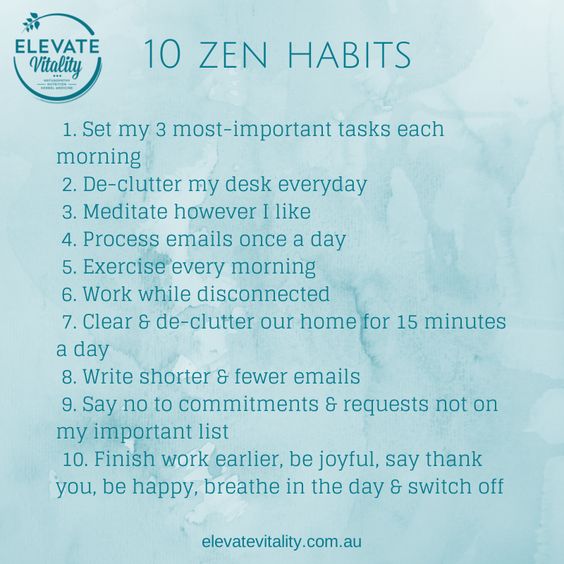
I also found this on pinterest and like it very much:

HIGHLIGHTS FOR WEEK OF 21 – 27 NOVEMBER 2022
Why is giving lectures so tiring?
One major difficulty in my work that greatly limits my productivity is feeling exhausted after any type of mentally challenging activity. Giving a lecture or teaching a class literally knocks me out and I need at least one hour of recovery time to be able to do any work again. In stark contrast, physical exercise affects me very little and overall makes me more productive.
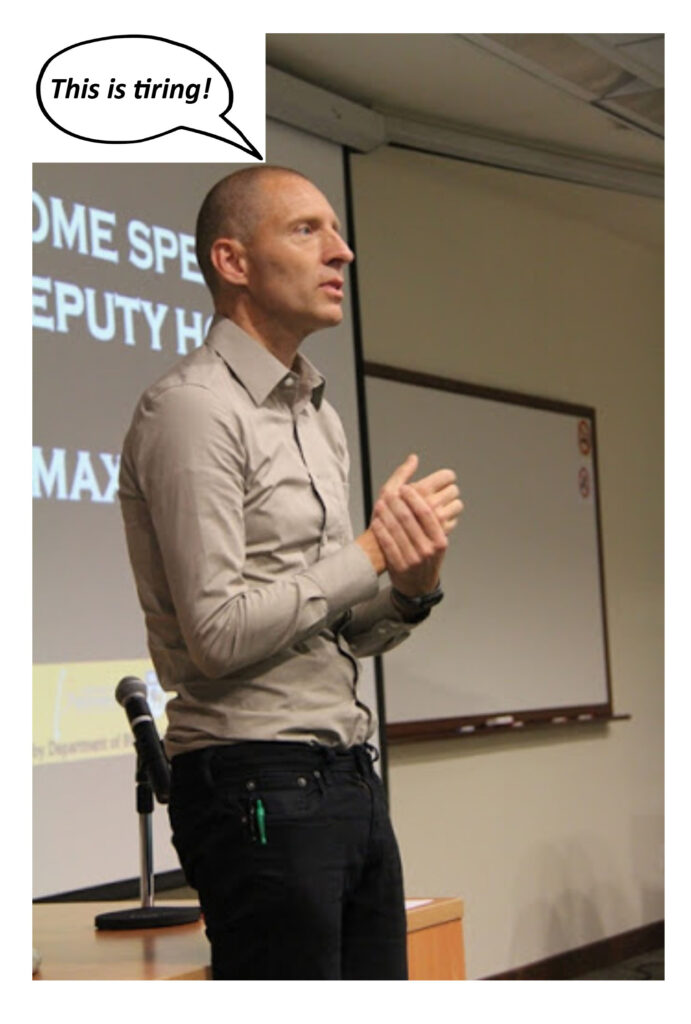

An obvious explanation for feeling exhausted after mental activity could be the high level of brain activity required. However, I also feel really tired after just invigilating the final exam for my module, where minimal brain activity is required. All I have to do is be present and answer a few questions that the students may ask. However, throughout the exam I feel excited, stressed and worried that a student question would reveal an ambiguity that I did not consider when setting up the exam or reveal a mistake I made.
Hence, it appears that what exhausts me is actually stress and excitement and not the brain activity itself. This then raises the question what it is about stress and excitement that causes me (and probably others) to feel so tired.
This week I read an interesting new research paper about this topic. The article, which for once was not published in PNAS, but in a journal called Current Biology, examined the mechanism behind the so-called cognitive fatigue we experience after mentally demanding and stressful work.
The researchers subjected participants to a 6.25h work-like protocol and divided the study subjects into two groups. Both groups of subjects performed the same cognitive task but with a different difficulty level, either requiring a high or a low level of concentration.
To measure cognitive fatigue, the researchers measured economic choices that participants made. Thus, after completing the 6.25 hour work task, the participants were asked to perform a new cognitive or physical task in return for a financial reward. The participants could choose between a low-cost (small effort) plus small reward option or a high-cost (large effort) plus high reward option. The idea is that if someone is mentally exhausted, he or she is less likely to do more physically and mentally demanding work to secure a financial reward. In other words, when we are tired, we are more likely to say to ourselves “I don’t care about the reward, I just want to rest …”.
First, the researchers confirmed that subjects who carried out the high-demand task for an extended period of time showed a preference for the little-effort option. In contrast, participants who did the easy work schedule were much more willing to put in energy to obtain a substantial reward. Hence, the researchers confirmed the presence of cognitive fatigue after mentally demanding and stressful work.
The researchers then wanted to find out the mechanistic basis of this effect. To do this, they used magnetic resonance spectroscopy (MRS) to monitor brain metabolites throughout an approximate workday. They found that the only metabolite that exhibited a significant correlation with the degree of cognitive fatigue was glutamate. The group performing demanding work ended up with more glutamate in the lateral prefrontal cortex (a brain region involved in cognitive control) compared to the group carrying out easy work tasks.
As a control, the researchers also monitored glutamate levels in the visual cortex. They found no difference, which makes sense because seeing what we do is not affected by the cognitive difficulty of a task.
What does accumulation of glutamate have to do with feeling exhausted?
Glutamate is an excitatory neurotransmitter involved in many functions in our brain. As a neurotransmitter, glutamate is released into the synaptic cleft by neurons and functions to activate glutamate receptors in the downstream (postsynaptic) neurons. Upon glutamate release, the concentration of glutamate in the synapse can be very high. Because high concentrations of glutamate can cause major neurotoxic effects, it is important that glutamate is quickly cleared from the synapse. This is mediated by glutamate transporters, which carry the neurotransmitter back into the upstream (presynaptic) nerve ending.
The most important glutamate transporters are the plasma membrane excitatory amino acid transporters (EAATs). Importantly, glutamate uptake by the EAATs is coupled to the co-transport of three sodium ions (3 Na+) and one proton (1 H+) into cells followed by the counter-transport of one potassium ion (1 K+). This means that the transport of glutamate is energy-dependent, as the cell needs to expend energy in the form of ATP to maintain the Na+ and K+ gradients across the cell.
The protein that maintains these ion gradients is the plasma membrane Na+/K+-ATPase pump. This plasma membrane proteins pumps 3 Na+ ions out of the cell and 2 K+ ions into the cell against their concentration gradients, while simultaneously consuming one molecule of ATP. As such, the Na+/K+-ATPase maintains a higher extracellular Na+ concentration and a higher intracellular potassium concentration. The Na+/K+ ATPase is so energy demanding that in some cell types it accounts for tow thirds of the total ATP consumption.
Consistent with a role of energy dependent glutamate transport in causing feelings of exhaustion after high demand work, the researchers not only found elevated total glutamate concentrations in the lateral prefrontal cortex brain region. When they measured glutamate diffusion, they observed increased diffusion co-efficients after the high demand cognitive task. Because diffusion of glutamate is faster in the extracellular space, this result is consistent with glutamate accumulation in the extracellular synaptic clefts, from where the neurotransmitter needs to be taken back up to avoid toxic excitation of glutamate receptors.
With all the glutamate being released and ATP being used to transport the glutamate back into the neurons, there is probably little energy left for other brain activities, making us feeling tired. In addition to glutamate, the researchers acknowledge that there may be other potentially toxic compounds that accumulate during cognitive exertion and that need to be recycled. Another limitation is that the study only shows a correlation between cognitive fatigue and elevated glutamate concentrations in the brain. Further experiments will be required to establish a causal link.
The findings of the study also suggest that feeling exhausted and tired after mentally demanding and stressful activities is unavoidable. This means that I have to plan for some rest times after lectures or schedule activities that do not require a high level of concentration and mental effort – like exercise.
Finally, the article also made me wonder if differential glutamate accumulation is a distiguishing feature between introverted and extroverted people. Introverted people like myself feel very tired and exhausted after interacting with others. In contrast, extroverted people can actually derive energy from social engagement and often feel invigorated after spending times in the company of others. It would be interesting to investigate if this difference has anything to do with how much glutamate is released in the brain of introverted versus extroverted people.
HIGHLIGHTS FOR WEEK OF 14 – 20 NOVEMBER 2022
One highlight this week was our departmental leather making staff welfare event at the Crafune Leather Craft workshop in Haji Lane in Bugis.


This is the lanyard I made for myself.


HIGHLIGHTS FOR WEEK OF 7 – 13 NOVEMBER 2022

Kegan’s Theory of Adult Development
Some time ago I wrote about Robert Kegan’s stages of adult human development, a concept that I find really helpful when interpreting other people’s behavior. What is more, knowing about Kegan’s stages can be very impactful in helping us to grow as a person. While revisiting the concept this week, I discovered how difficult it is to achieve the last stage on Kegan’s “ladder”.
Let’s first start with a brief summary of the five stages, as described on this excellent page:
Stage 1 – the Impulsive mind, the stage in which we start out as young children.
Stage 2 – the Imperial mind. This is the stage that humans inhabit as adolescents. We are mainly concerned with ourselves. The purpose of our relationships and actions is to satisfy our own needs and interests. The most important motivators are external rewards and punishments. Interestingly, around 6% of people remain in this stage during adulthood. I believe that everyone knows an adult who is “stuck” in this stage.
Stage 3 – the Socialized mind. As the name suggests, our values, decisions and actions are primarily influenced by other people (family and friends) and the environment (societal norms, cultural customs, social media). We are very conscious about how others experience us and we mainly look for external validation. 58% of adults are in the socialized stage.
Some people can be very happy in this stage. But there are some obvious problems associated with this stage: a competitive mindset, which sets us up for perceived failure and disappointment, and not being focussed on what actually is good for ourselves. With a socialized mindset, we also experience confusion and stress when conflicting messages from our environment arrive and we try to satisfy everyone’s expectation (take for example conflicting messages from our spouse and boss about how we should allocate our time).
Another problem with the socialized mindset is that we tend to define ourselves by the results we get. However, it is important to remember that our results are determined by various factors, many of which are out of our control. And defining ourselves by our results completely ignores the fact that we constantly grow and develop, and that failure is the most important prerequisite for success. For instance, a runner with a poor Personal Best time can be a more serious runner than someone who can run much faster. The slower runner may be more dedicated and focussed on improvement. This is difficult to recognize if we only evaluate someone based on his or her performance.
Stage 4 — the Self-Authoring mind. In this stage, we follow our own course and do what we feel is best for us. Only 35% of the adult population are at this stage, which sometimes seems like an overestimate to me. I have realized is that I really enjoy the company of self-authorizing people, as the mindset of a person affects the content and character of a conversation. Socialized people tend to talk about their social environment, whereas self-authorizing people often talk about their own opinions, thoughts and goals, which is a lot more meaningful.
Stage 5 — The Self-Transforming mind, the highest stage on Kegan’s adult development ladder, which only 1% of the adult population inhabit. While in the self-authoring stage we question the outside world (the social environment), in the self-transforming stage we question ourselves. We are able to adapt to changing circumstances by transforming ourselves.
I previously have not reflected much on my ability to be self-transforming. But one example that suggests that I am still a long way from achieving this stage is the transition from in-person to online teaching at the onset of the COVID pandemic. I initially refused to accept that online teaching could work and conducted classes in person as long as possible, even though this constituted significant difficulties for the students and administrative staff. After finally being forced to change my teaching mode, I came to realize that online teaching can be very engaging and fun when making appropriate changes. However, if I had a self-transforming mindset, I would have voluntarily adopted online teaching and viewed the transition as a challenge and an opportunity to learn and innovate.
In the self-transforming stage, we can also understand things from many different perspectives. We realize that life and people are complex, and we can hold multiple opinions at once. For instance, if I do not agree with the philosophy and motivation of a colleague, I can consider reasons why the other person thinks differently and still engage in a productive collaboration, even if I don’t share the same values. Sadly, I find doing this rather difficult.
The realization that I am a long way from adopting a self-transforming mindset prompted the obvious question:
Why is it so difficult for me to achieve this stage?
What came to my mind is firstly that I wrongly believe that “I am my values”, when in fact “I am my actions”. Other people do not care whether what I do is based on some personal belief or philosophy. They only see and judge my actions. Hence, it would be wiser to let my actions tell people that I am someone who can adopt and be cooperative and helpful towards others.
The other major impediment to be self-transforming is my “be right” mindset. What I mean by that is that I am preoccupied with whether things that people do are right based on my own standards. If I assess that someone’s behavior, attitude or actions are not “right”, I find it very difficult to initiate cooperation and collaboration. This mindset is not helpful, because what matters is not to be right, but to obtain the results we want to achieve.
The next question is of course how to overcome these obstacles in my mindset, but I will leave this for another reflection.
HIGHLIGHTS FOR WEEK OF 31 OCTOBER – 6 NOVEMBER 2022

This week, my Sunday morning visit to Starbucks at Vivocity to complete my morning work routine of reading papers and working on my important projects was not pleasant. Usually, this Starbucks branch is relatively quiet in the morning. But this time the cafe was very crowded and many groups were talking loudly (some people were even singing). Worst of all, some guests were treating the Starbucks cafe as their living room, placing the phone with speakers on onto the table and letting their children watch from their seats.
While few parents seem to be willing or able to spend time with their children in public spaces, an NUS physics Professor who sat next to me actually spoke with his young daughter, which once upon a time used to be the normal thing to do. Of course, one can argue that parents are busy and getting the children occupied by watching movies on phones or tablets gives them time to do other meaningful things. But most of the time the parents are using the “free” time to engage with their phones, probably not productively in most cases.
There are several obvious problems with letting children watch movies and programs wherever they are. Not only does this disturb peace and quiet, it also creates an early dependence where children do not want to or do not know how to pass time without a mobile device. And it must affect parents-children relationships.
Needless to say, there are exceptions, like the girl I saw yesterday at Subway, who unpacked a huge pile of novels she just bought and shared with her dad how excited she is to read them.
Nonetheless, the drive to spend every free minute to engage with easily digestible online content seems irreversible. Therefore, I was very surprised and excited this week when I read a BBC article about an Indian village that tackled addiction of children and families to mobile phones and excessive watching of television programs in a very innovative and drastic manner.
The council of a village called Vadgaon in India’s Maharashtra state with a population of about 3,000 people decided to implement a form of digital fasting. All village members were asked to switch off their TV and mobile phones daily from 7 pm to 8:30 pm. The program has been successful for the past few months, which I found remarkable and inspiring. And there were two important questions that made me wonder.
How did the village council manage to agree on introducing such a drastic measure?
It probably took one person with a vision, who had the trust from the council members and was able to pull the rest along. In addition, the majority of council members must have been concerned about the problem. They also must have been willing to lay aside partisan political interests and worries about what the people (or voters) would think of them and how it would affect their standing in the village.
Sadly, partisan behavior and worries about votes affect most decisions in politics, and often prevent change that is good in the long run or in the bigger scheme of things. What happened in the Indian village is very encouraging, but sadly it may be more difficult to implement in larger communities.
The second question is how the village council managed to get everyone to follow the policy of switching off their TV and mobile phones every evening?
As the article describes, the decision was in fact not easy to implement. It initially took the council staff and supporters to go around the village and urge people to switch off their TVs and phones. This goes to show how important it is do do ground work when trying to implement new measures. People want to be heard and not be told what to do. It would help if more organizations, local governments and companies would use these principles.
There is no doubt that digital fasting helps, even if it is only for a relatively short time every day. It helps to shift mindsets and it shows people what is missing and what is possible in our relationships with our close ones. Hence, I feel that implementing digital fasting, be it in families, workplaces or public places, would help greatly to improve our mental well-being, happiness and joy.
HIGHLIGHTS FOR WEEK OF 24 – 30 OCTOBER 2022
The highlight of this week was going bowling with Yee Liu and our two Polytechnic students from last year, Vernice and Josabella.
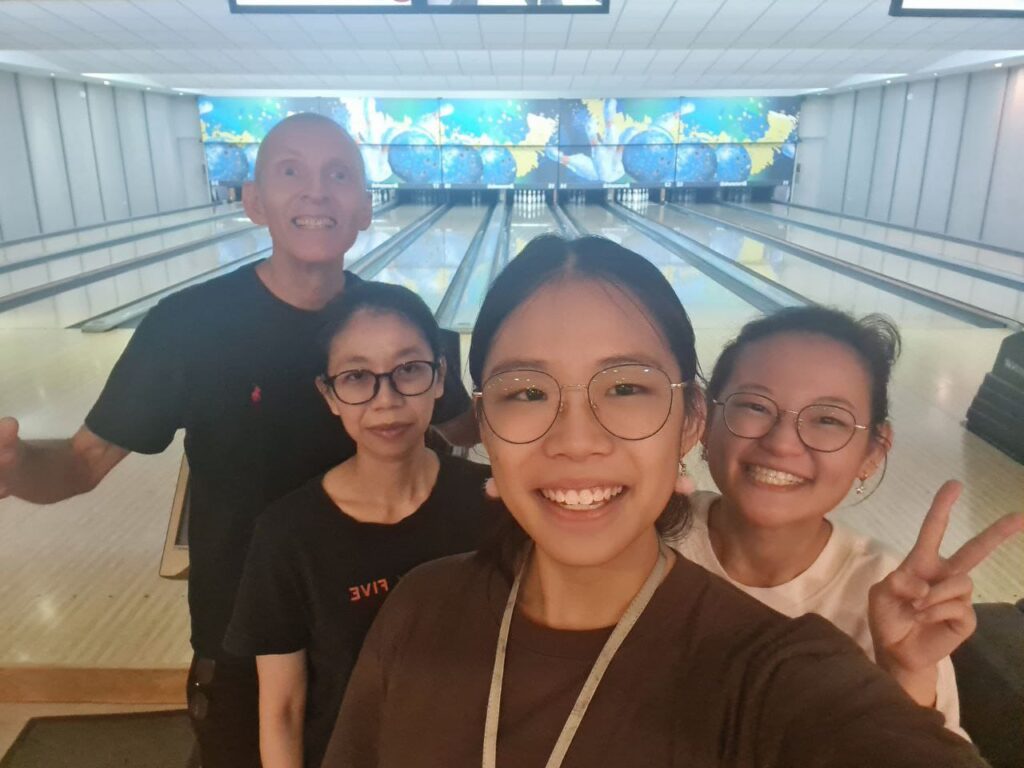
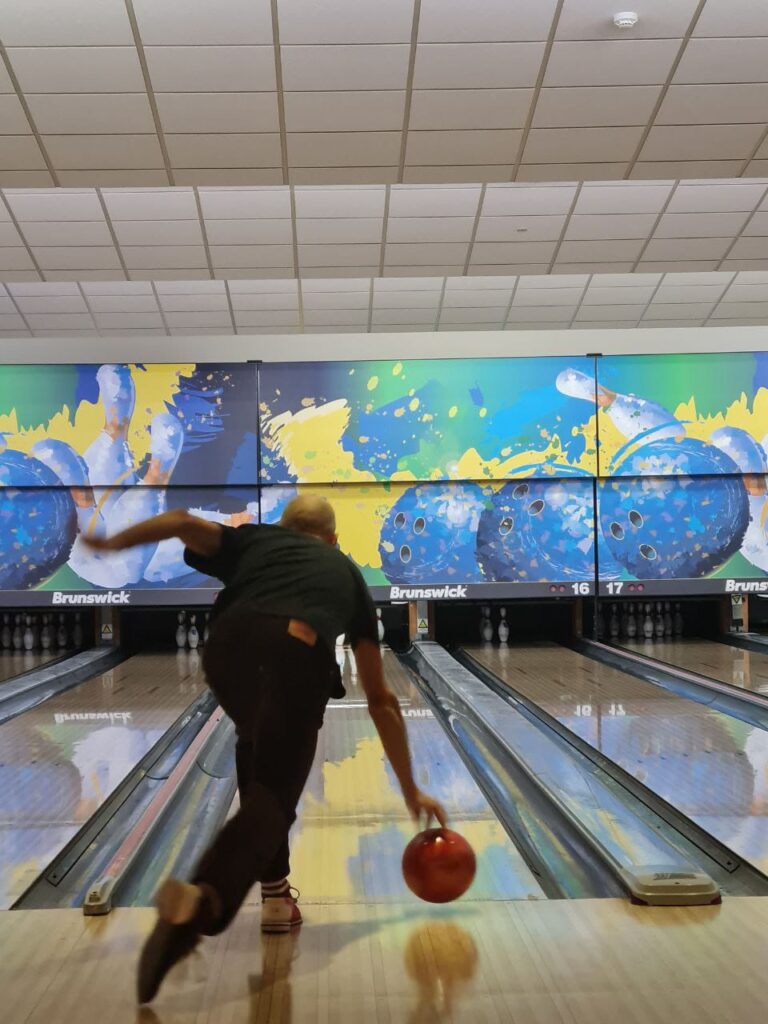
HIGHLIGHTS FOR WEEK OF 24 – 30 OCTOBER 2022
The highlight of this week was going bowling with Yee Liu and our two Polytechnic students from last year, Vernice and Josabella.


HIGHLIGHTS FOR WEEK OF 17 – 23 OCTOBER 2022
Subjectivity in the assessment of research papers by famous versus less known scientists
Last week I discussed the importance of subjectivity of assessments and evaluations in the real world. This week I read a very interesting article that shows how subjectivity can play a major role in the evaluation of research papers.
Before being published in a scientific journal, research papers are first processed by an academic editor, who sends the manuscript out to two or three peer reviewers. The peer reviewers are experts in the field and judge the paper for its suitability for publication. The reviewers (or referees) can suggest to accept or to reject a paper, or they can recommend that the authors conduct a minor revision (involving verbal changes) or a major revision (including additional experiments).
The new study by Huber and co-authors looked at the so-called “status bias” during the review process, in other words, whether the decision of the reviewers to accept or reject a paper is dependent on how well-known or famous the author of the paper is.
The study by Huber et al. is not the first publication on this topic. However, it is notable for a number of reasons. The study was large, including over 3300 invited reviewers, and the authors pre-registered their study. This means that the authors of the study were committed to report the findings irrespective of the outcome, even if the study revealed no evidence of any status bias.
Furthermore, the study was a so-called field experiment, which means that it was conducted in a real-world setting. Two real scientists wrote a paper, which was submitted to a real journal and handled by a real editor. The editor then tried to recruit reviewers as he or she normally would for any submitted paper, with the exception that instead of trying to find 2 or 3 reviewers, the editor invited more than 3000 researchers to review the paper.
To determine if there is indeed a status bias and how pronounced this bias is, the authors of the study asked a Nobel laureate and one of his lab members (who is a relatively unknown scientist) to jointly write a research paper. To researchers who agreed to review the paper, they then revealed either only the name of the famous author, only the name of the unknown scientist, or they kept the author names anonymous. The reviewer evaluations and verdicts were then correlated with the reviewer’s knowledge about the author
The results were remarkable and showed drastic differences as illustrated in the figure below. 65.4% of the reviewers who were shown the little-known author recommended to reject the paper. In contrast, only 22.5% of the reviewers who were shown the famous author did so. The rejection rate if the authors were anonymized was in-between (48.2%). On the other hand, 9.9% of the reviewers to whom the little-known author was revealed gave a favorable verdict (accept and minor revision). That number was around 6 times higher if the reviewers thought a famous author had written the paper (58.8%). All differences were highly significant.
Percentages of reviewers making recommendations to reject the paper or accept the paper with major, minor or no revisions, by condition. In condition AL, the author name was anonymized in the invitation email, but the little-known author’s name appeared on the manuscript after the referee had accepted to review the paper. In condition AH, the high profile name appeared on the manuscript instead. In condition AA, the author name was hidden during the entire review process.
Even when being asked to judge if the information is new, the referees gave much higher ratings if they thought that the author was well-known compared to referees who reviewed the anonymous version or believed the author to be not well-known, even though all reviewers were looking at the same paper!
In summary, the famous author received markedly more favourable reviews compared to an anonymized author, whereas the little-known authors received markedly less favourable reviews compared to an anonymized author.
The results raise the question of how the huge bias of reviewers based on the author’s fame can be addressed?
The obvious solution is to anonymize the manuscripts. Some journals have adopted the approach to blind the reviewers to the author names and affiliations. One complicating factor is that nowadays many authors make their papers publicly available online before acceptance by a journal as so-called pre-prints. As a way to prevent reviewers from finding manuscripts online, Huber and colleagues suggest to change the title and abstract in the submitted version. Huber et al. also point out that even if the possibility of finding a paper online exists, keeping the author names and affiliations anonymous at least gives the referee the option to review the paper without knowing the author name.
Interestingly, the research study showed that authors who accepted to review a paper, knowing that the author is a junior scientist, were milder in their judgement than reviewers who only found out about the author name after accepting to review the paper. This suggests that the acceptance to review a paper is a process that can select for reviewers who might be more favorable towards less known authors.
Apart from blinding the reviewers to the author identities there are no other obvious preventive measures that can be taken, apart from ensuring that the journal editors are aware of the existence of status bias, and take this into account when coming to a final decision about whether to accept or reject a paper.
Status bias may affect various other aspects of academic life, for instance funding of research grant applications and evaluation of faculty job candidates. It is probably rather likely that applicants who come from labs headed by famous scientists or who are able to provide recommendation letters written by famous researchers stand a higher chance to land a job.
As it happens, I just had (another) research paper rejected by a journal. It was our first paper in this particular area of research and I had the strong impression that status bias played an important role in the decision by the editor. However, even though status bias can be very frustrating for an individual researcher, lamenting about it is not helpful, as I am unlikely to change it. The only part that I can control is my own effort, and hence I will keep trying!
HIGHLIGHTS FOR WEEK OF 10 – 16 OCTOBER 2022

Assessing students objectively OR subjectively?

This week I listened to an interesting podcast, an interview with the NUS 2022 Outstanding Educator awardee Donn Koh.
What especially peaked my interest was a discussion of the role of subjectivity when assessing student work. As a lecturer, I normally strive for as much objectivity as possible. However, there is an apparent contradiction that I have not previously considered:
In contrast to the University setting, assessments in real life are anything BUT objective.
The podcast raised the point of whether a strategic introduction of subjectivity would make our assessments more authentic?
In real life, a number of factors contribute to the subjectivity through which solutions and proposals are being evaluated. Firstly, the assessors are biased. For instance, if we are given a task in the workplace, one supervisor may expect things to be done in one way and another supervisor in a different way. Hence, the evaluation will vary dependent on the supervisor.
A good example for evaluator bias are my applications for research grants. Success of grant applications is not only dependent on the quality of the proposal. It is also dependent on the background, opinions and expertise of the reviewer and on what the grant evaluation committee thinks of the applicant. In order to succeed, I need to take this subjectivity into account and preempt it, for instance by explaining concepts that a non-expert may not be aware of, by addressing potential criticisms, or by becoming known in the field as someone who does good research.
Secondly, our solution or proposal exists in the context of ourselves and how we present ourselves. Do we show excitement and passion. Do we take steps to ensure our proposal gets attention. Are we in good terms with the requester and does the requester have confidence in our ability to complete tasks.
Thirdly, the conditions of assessment often change. For instance, I may have prepared a presentation expecting an in-person talk but there may be a last-minute change to an online format. Or I may have designed a product for a market that has changed.
Lastly, while assessments in the University are usually final outcome-based, assessments in real life are often progress-based. Someone who shows a big improvement when completing a task may attract more recognition compared to someone who always performs well. In fact, two people may produce the same result, but the result of an unexperienced person could be considered excellent progress, while that of a more experienced person is deemed disappointing. And this makes sense, because the progress and improvement that someone exhibits is an indicator of the effort spent to complete the task and can be used as a predictor of future success.
What is more, if we come up with an unsatisfactory solution in real life, we usually have the chance to improve and succeed in the end. On the other hand, if we come up with an unsatisfactory solution in our studies, we get a bad grade, and this will stay with us.
What these examples show is that in real life our success will depend on whether we can identify the values and priorities of the evaluator or customer, whether we display good social skills and whether we are able to display a growth attitude.
In my Cell Biology course, I always strive to state the questions in a way that there can be no room for questioning. Nonetheless, students often protest that a question was ambiguous or point out that other possible answers could also be considered correct. This is not surprising because it is impossible to eliminate all ambiguity and alternative interpretations. Firstly, students often think differently from how I do. Secondly, practical application questions rarely have simple black or white answers, but are usually complex. Hence, there will always be some level of ambiguity.
My response to students is usually to admit that the question was not stated clearly or that alternative interpretations are possible. I often also adjust the marks accordingly. However, the important point is that in real life we cannot change the way our proposals and solutions are being evaluated. Based on the information given, we need to come up with the most likely answer. In real life we are usually wrong if we choose a solution that is possible but not the best solution. This raises the question of whether we are really doing students a favor by trying to eliminate all subjectivity in our assessments.
How then can we prepare students for subjectivity in the real world?
Firstly, we can make students aware of the ubiquity of subjective assessments in the professional world by discussing the topic in class. We can highlight the importance of making one’s own judgements, of accepting that we cannot always be right and of learning from our mistakes.
In my Cell Biology course I usually show a video during class in which a lecturer discusses how important it is for students to get to know their lecturers. It helps them to practice communication and networking skills, it helps in their understanding of the course concepts and it can help in enlisting Professors to support students, for instance with meaningful reference letters.
As an aside, the lecturer mentions at the end that approaching the Professor also helps to get better grades. I always brush this statement away with humor. However, I realize now that this is an opportunity to discuss that subjectivity is a reality, and that it is not helpful to pretend that subjectivity in the University setting does not exist. Adapting to subjectivity in the University likely helps students to succeed in their studies and more importantly after graduating in their professional life.
Finally, we can also demonstrate to students in our assessments that we value growth and improvement. This can be done through sending encouragement emails (which I do not do enough). Another approach that we use in our postgraduate course is to provide feedback on student assignments and let students improve their work. We then only grade the final improved submissions. We can also give students second chances. For instance, in my undergraduate course I give students the chance to improve their mid-term test results if they do well in the final exam.
In conclusion, when we want to make our assessments authentic, we should not only consider the content of our tests and exams, but also how we evaluate student performance!
HIGHLIGHTS FOR WEEK OF 3 – 9 OCTOBER 2022

Important lessons from practicing presentation skills
This week I taught a postgraduate student class on presentations, in which I tried three new activities to practice presentation skills. Firstly, the students had to recite a paragraph of gibberish (or nonsense) in the most convincing manner without laughing. I came up with a number of gibberish paragraphs with the help of a “gibberish generator” website and some additional editing. I imagined this exercise to be really fun, because when I tried reading out the examples, I could not stop laughing.
Here is an example:
An ionic gel used as an electrical conductor was the burden that modern agricultural demand deposited onto the artificial Research Institute. The ionic gel was just sticky enough to make liquids that could be used as electrical pollinators. The undersides of the artificial pollinators are pollinating bees. Researchers are coated with horse hairs and pollinated with insect-sized drones. After a decade of sitting on houseflies and news reports of robotic insects, the artificial researchers at their inventional institute are hopeful that their discovery will pave the way to a future with less bees and more honey.
In the second exercise, students had to recite paragraphs from famous speeches, which I found online, in the most expressive and convincing manner. I imagined that it would be a fun experience for students to pretend to be a famous person delivering a profound speech.
John F. Kennedy, “Inauguration Address”
January 20, 1961; Washington, D.C.
In the long history of the world, only a few generations have been granted the role of defending freedom in its hour of maximum danger. I do not shrink from this responsibility – I welcome it. I do not believe that any of us would exchange places with any other people or any other generation. The energy, the faith, the devotion which we bring to this endeavor will light our country and all who serve it – and the glow from that fire can truly light the world.
And so, my fellow Americans: ask not what your country can do for you – ask what you can do for your country.
My fellow citizens of the world: ask not what America will do for you, but what together we can do for the freedom of man.
Thirdly, I asked students to talk about any topic for two minutes without using any filler words. Upon using a filler word, a bell would ring and the time would be taken. I started this exercise and I lasted for only 33 seconds. Notably, there was only one student who could complete the full two minutes and my 33 seconds were actually (= my favorite filler word, which prompted the sound of the bell) the second best result.
I predicted that the recital of gibberish would be the most fun and reading out famous speech paragraphs the most useful. I was not sure about the value of speaking without using filler words because I had no idea about how good people would be. Unexpectedly, the fun involved and usefulness turned our to be exactly the opposite of what I had expected.
When reciting the gibberish, surprisingly, none of the students (presenter and audience) laughed. The students and I myself agreed that this exercise was not particularly engaging or useful. I still do not have a good explanation for why the exercise was less fun that I had imagined. It may partially be because the students did not recite the paragraph very expressively. As a a result the nonsense content did not become so apparent.
Reading out famous speeches was more useful, but for a more unexpected reason. Namely, it became apparent that some students have difficulties in reciting written text, which is an important realization that could prompt them to improve on this skill.
The most fun AND useful exercise was the task to speak without using filler words. What is more, I realized that the exercise is likely to be an excellent approach to stop using filler words, if done on a repeated basis.
The common advice given to eliminate filler words is to listen to recordings of ourselves and identify the filler words we commonly use. We should then, when giving a presentation, pause (stay silent) instead of breaking the silence with a filler word. The problem is that when we give a talk, we usually focus on the content and a clear delivery. This makes it very difficult to pay attention to our use of filler words.
I feel that the only way we can eliminate (or at least reduce) the usage of filler words is through deliberate practice. This may lead to forming the habit of staying silent instead of filling the silence with filler words and to stop using filler words in our sentences. Giving short presentation where we only focus on filler words and not on the content or delivery might be a good approach.
Another major advantage that became apparent during the class is that this exercise helps students to build impromptu speaking skills.
Naturally, to see improvements it is necessary to repeat this exercise of giving impromptu speeches without using filler words frequently. I in fact proposed to my students to include such an exercise at the end of each lesson. But they declined the offer. This is not really surprising, because presenting in front of others is not a pleasant exercise for most students. Nonetheless, I am excited to make this a compulsory component of the course next year, and I am impatient to see if it will make a difference to my students (and of course to myself).
My class also re-iterated two other important lessons:
Lesson 1: We never know how an idea works unless we try it out – and when we do, we often get unexpected results.
Lesson 2: Students do not automatically do what is good for them!
HIGHLIGHTS FOR WEEK OF 26 SEPTEMBER – 2 OCTOBER 2022

The Power of talking to strangers
Last week I discussed why collaboration and engaging others is helpful. Counter to common belief, the power of collaboration does not primarily lie in finding someone whose expertise helps us to achieve our goal. Although seeking expert collaborators often gets the job done, it rarely produces really impactful results. Collaboration becomes most effective if we select collaborators who have a shared passion but a different background and perspective. This is true for scientists seeking collaborators, and it may also be true when seeking normal conversations, where we can often find important answers by talking and opening up to strangers.
This week, I discovered a new paper whose findings suggest that despite the advantage of engaging others without knowing if they can help us, we are reluctant to do it.
The study, published in the Proceedings of the National Academy of Sciences (PNAS), compared how much people expected to learn from a conversation with a stranger with how much they actually learned. The researchers found that that people systematically underestimate how much they will learn in conversations with strangers.
In the study, participants were randomly matched with a second participant to have a conversation with a variety of different instructions. Participants learned more from the conversation than they expected to learn in a variety of different settings, regardless of the conversation prompts they received or of whether they were instructed to try to learn something from their conversation partner or to simply have a pleasant conversation.
To ensure that the differences were not due to perceived learning, the researchers also asked the participants to write down what concrete information they anticipated to learn and actually did learn. The results confirmed that people indeed learned more than they expected to.
Why Are Conversations with Strangers Surprisingly Informative?
The researchers hypothesized that the uncertainty of engaging in a conversation with a stranger makes it difficult to predict learning, leading people to be more pessimistic about about what they might learn. They then tested this hypothesis with a number of experiments.
For instance, in the first experiment, the researchers compared expected versus actual learning from a conversation with a stranger to learning through surfing the web. When searching the internet, it is easier to predict what we may learn because we are in control and can choose the content. Hence, learning online may be perceived to provide more certainty.
Indeed, the results showed that the subjects in the conversation condition significantly underestimated
how much they would learn. In contrast, participants surfing the web surfing did not.
In another experiment, the authors compared the expected and the actual learning when participants talked to a stranger versus a friend or relative. Again, the results showed that the participants only underestimated what they learn when engaging in a conversation with a stranger, with whom it was more difficult to predict what they might learn.
All this evidence goes against my own preferences of trying to figure things out on my own by sitting down, reading up and contemplating. Although this may not be the most efficient and successful strategy (and I my past experience has often confirmed this), it is the most fun method, at least in for me.
By just relying on myself, I sometimes come up with correct answers on my own, which can be very gratifying. For instance, from reflecting on my own experience, I came to the conclusion that in order to feel happy in the moment, I need to look at the past and the future with a positive mindset (by recalling pleasant memories and creating exciting goals that I can look forward to). When I recently attended a wellness talk by best-selling author and global speaker Ron Kaufmann, I was amazed to realize that he proposed the same.
What is more, when contemplating by myself, I sometimes come up with unique solutions. This is especially true in research. Having the experience of coming up with an idea on my own is immensely gratifying.
What does help greatly is, once I have an idea, to talk about it with someone else. Here it is indeed more helpful if the discussion partner is not an expert but an interested person with an open, non-biased mindset.
There is another reason why I often choose not to interact with others. Although I can get a lot of information, the information I obtain is often not what I am actually looking for or what I am interested in. Life is short and I feel that it is hence important to maintain some focus in my knowledge and skill acquisition.
There is, however, one area where I find talking to strangers really helpful – opening doors to find the right people who can help us to achieve our goals. This is probably the main reason why outgoing and extroverted people tend to enjoy more professional success.
HIGHLIGHTS FOR WEEK OF 19 – 25 SEPTEMBER 2022
This week I read an interesting paper in which researchers looked at what are the characteristics of a successful scientist. It is well-established that engaging in collaborations is an important factor determining scientific success. Hence, the researchers specifically examined this aspect.
The authors of the study considered two major measures of success, the productivity of a scientist (in terms of total publications) and the impact of a scientist (in terms of the mean citations per paper).
Of these two parameters, impact is generally more desirable compared to productivity. For instance, Nobel prizes are usually given to scientists who make single impactful discoveries, and not to those scientists who make the greatest number of discoveries.
The first interesting finding of the study was that the two metrics productivity and impact are almost uncorrelated.
The authors also found that the average number of citations per paper of the scientists with the highest productivity (top 1%) is roughly the same as the mean citations per paper of all scientists. In other words, the impact per paper of the most productive scientists is not higher than that of other scientists who are less productive. The reverse is also true, the productivity of scientists with the top 1% impact is almost the same as the average productivity of all scientists.
The lack of correlation between the number of published papers and their impact is interesting. The finding indicates that one cannot assume that someone who produces lots of papers is impactful. It also implies that big laboratories who produce lots of papers (and tend to get lots of research funding) do not necessarily produce more impactful papers. (However, it is important to remember that the authors did not actually look at the correlation of lab size and impact.) That said, it a scientist publishes 5 papers and someone else only 1 paper, even if the impact of all papers is the same, cumulatively the person who publishes 5 papers still has a greater impact.

Scatterplot of the productivity of scientists (measured by the number of papers a scientist has published and the average impact of scientists (measured by the mean citations c10 per paper = the number of citations that a paper receives during the 10 years since it was published). Each dot represents a scientist. The results show that the correlation between productivity and average impact is very weak and that scientists with high productivity and scientists with high impact are two very different groups.

Scatterplot of the productivity of scientists (measured by the number of papers a scientist has published and the average impact of scientists (measured by the mean citations c10 per paper = the number of citations that a paper receives during the 10 years since it was published). Each dot represents a scientist. The results show that the correlation between productivity and average impact is very weak and that scientists with high productivity and scientists with high impact are two very different groups.
The authors then made a very interesting discovery. They compared the behavior of scientists with the 1% highest productivity and the 1% highest impact. They found that these groups behave very differently when they collaborate with other scientists. Highly productive scientists tend to collaborate with another scientist only on a single topic. In contrast, impactful scientists usually work with their collaborators on multiple topics.
What makes this finding so important? The finding is important because it helps to explain why collaborating with others promotes success. This has implications for other areas of life as well.
Based on the study, and contrary to common belief, the importance of collaboration is not related to people with different technical expertise helping each other to get a project done that would be more difficult to accomplish alone. What is a more important outcome of a collaboration is the intellectual interaction. People who make a difference engage collaborators irrespective of the specific problem they are trying to solve. They do not seek collaborators primarily for their expertise for the specific problem at hand. What they seek and value is the collaborator’s intellectual input.
In the study, to establish the different behaviors of productive versus impactful scientists, the authors determine for each scientist a “single-topic ratio”. This is defined as the fraction of single topic collaborators among all collaborators of a researcher. For instance, if a scientist works with all his collaborators on a single topic, then the ratio will be 1. If he or she works with one collaborator on a single topic, and with one other collaborator on two or more topics, then the single-topic ratio will be 0.5.
As can be seen in the figure below, productive scientist are much more likely to engage their collaborators on a single topic compared to impactful scientists. On the contrary, impactful scientists are much LESS likely to work with collaborators on a single topic. These findings were validated across different scientific disciplines.

The fraction of single-topic collaborators (among those having at least 10 co-publications) for scientists with different productivity. More productive scientists have a significantly greater fraction of single-topic collaborators.
The fraction of single-topic collaborators (among those having at least 10 co-publications) for scientists with different impact. Higher-impact scientists have a significantly smaller fraction of single-topic collaborators.
According to the authors, their study suggests that productive scientists place more importance on expertise when selecting a collaborator. In contrast, impactful scientists tend to work with collaborators who have performed well in the past, irrespective of the topic of the collaboration, and who share similar interests to them. The latter appears to be a more successful strategy.
In a previous post I discussed a relevant podcast from Asian efficiency, which highlights what surprising results seeking collaborators can have, even if we do not consider them experts in the specific problem we want to solve. Below I share an excerpt of this podcast again.
HIGHLIGHTS FOR WEEK OF 12 – 18 SEPTEMBER 2022

Important lessons from finally getting Covid
I spent the whole week with Covid, which I never thought could possibly happen to me. And hence I never tried to imagine how inconvenient it is if returning to my normal life was dependent on a negative ART self-test result. But as I discussed last week, breakdowns usually have positive outcomes, too, and Covid has taught me four important lessons.
1. Being stuck at home made me realize what in my everyday life is really important to me. Exercise would probably come first, but I was still able to do some exercise. But apart from doing sports what I missed most was doing experiments in the lab! All the reading and thinking and writing I do on a daily basis is great, but it seems meaningless without getting up from my desk and doing real work. This was a great lesson that made me appreciate my privilege to have the time and ability to do experiments.
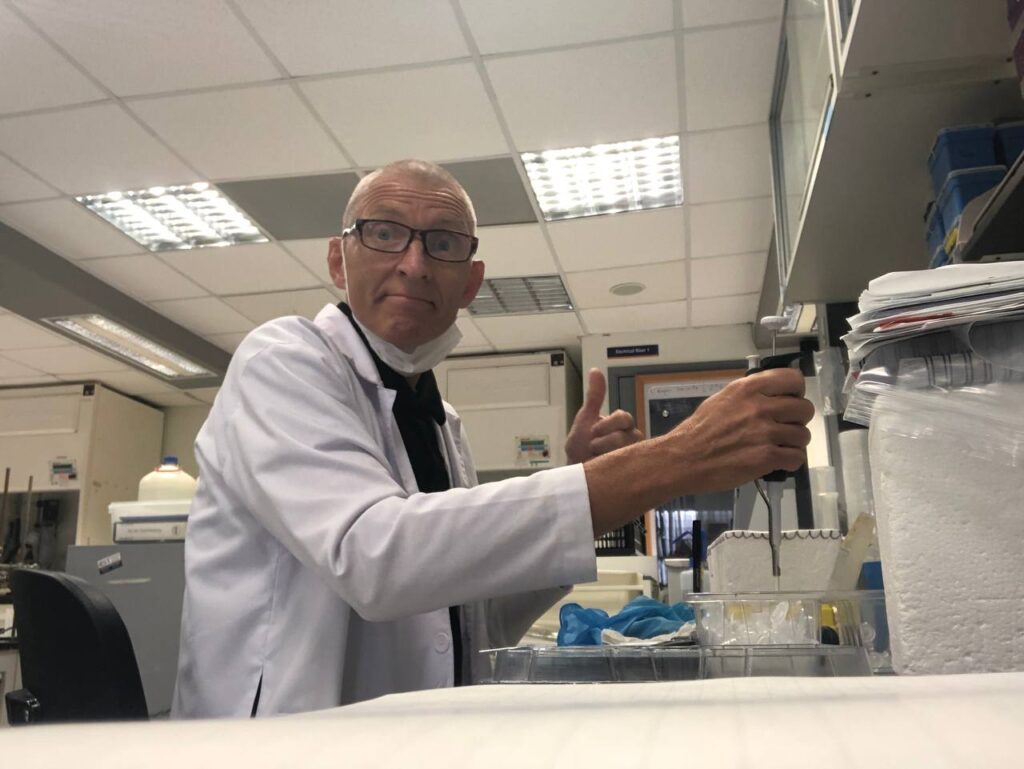

2. Having Covid gave me some time to think about things I want to improve in my life. One of my long-standing goals is to reduce my possessions and the importance of owning “things”. As always, the best way to come up with new ideas is to get inspirations from others. I watched a number of inspiring TED talks by people who stopped buying things for a year or got rid of most of their possessions. What they experienced as a result of simplifying their lives impressed me greatly.
I also learned about a new tip on how to stop buying. One speaker adopted a mindset where whenever he was tempted to buy something, he interpreted his temptation as the result of a store or website trying to trick him into buying something that he does not really need or want. This sounded like a great strategy, in part because it is actually true. In most cases we want to buy new things because we were made to believe that the new thing is something we need to have in order to feel happy, cool or up to standard.
I was also excited by minimalists who described the transformation they have experience after getting rid of much of their personal belongings. I was inspired to start a new project: to get rid of 5 things every day. I must say that this has been really exciting. It is something that does not take a lot of time, but gives great satisfaction and also helps to re-discover long forgotten belongings.
3. While watching TED talks, I also came across (only!) one unrelated talk by a 99-year-old holocaust survivor, who talked about how despite all the unbelievably difficult things that have happened to him during his life, he feels no hostility towards others. Instead, he tries to give kindness to people around him every day. In times when I was ill and not feeling well, this was a good lesson that taught me the importance of giving joy, compassion and kindness to others, in order to make life as beautiful as possible, for others and ourselves, because kindness brings happiness for others as much as for ourselves.
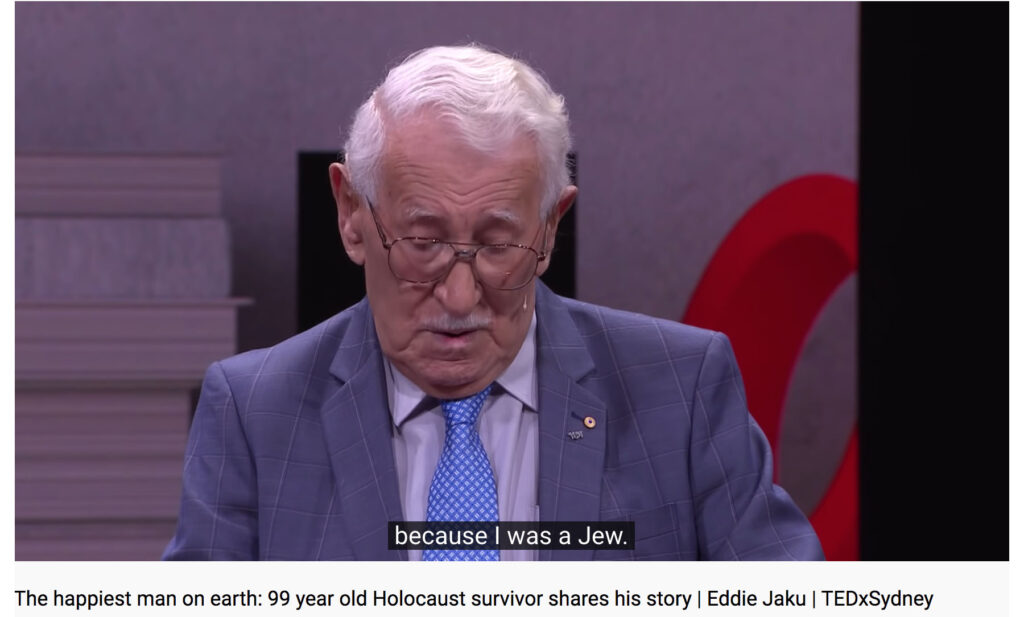

4. The last lesson that Covid taught me is that I have friends. The support messages from my running group moved me. And when they messaged me how they did the training program in my absence as though I was there, I truly felt happy.
Nonetheless, when the ART kit finally showed a negative result, I could not believe it and started jumping and dancing! Despite all the great lessons, I am happy to be FREE again!


HIGHLIGHTS FOR WEEK OF 5 – 11 SEPTEMBER 2022

This week I read an interesting coaching blog from Master Coach University. I subscribe to their blog articles via email. The emails have been an amazing source of valuable insights that is totally free. It speaks to the company’s philosophy, to provide meaningful content to people, irrespective of whether someone signed up for their coach training program or not.
According to their business model the company provides value from day one in order to get potential clients interested. By providing value immediately, the customers know what to expect and what they will get more of if they do join the program. Even if a potential client does not sign up, the company is likely to have achieved something for their customer, who may then recommend the company to others.
In contrast, if a company holds back and only promises value to get the customer to sign up first, the customer is less likely to do so. The customer may also have unrealistic expectations. Holding back on giving value until a client has committed to a program also creates pressure for the value provider who now has to prove that he can deliver what was promised.
The latest post from Master Coach University reminded me of two important lessons. The first is that when we face unexpected challenges, we cannot control what difficulties we experience, but we can decide what attitude we take towards these difficulties. In other words, we could consider any challenge as an upsetting roadblock; or we could consider it an opportunity.
This is a fairly well-known lesson, which I unfortunately often forget. This is because at the face of it, some things do not seem like an opportunity, but simply like a major disruption to my normal everyday schedule. This includes for instance finally getting Covid this week.
In a fictional example, if my website were to crash (knock on wood) and I had to re-do everything, it would seem devastating. If I were to lose possessions that mean a lot to me, I would feel very sad.
By thinking rationally, there are positive ways in which I can look at these breakdowns. It could prompt me to consider how important it is to me to spend time writing for my website on a daily basis. I might realize that I would rather channel my energy into something else. With regards to personal possessions, it could be an occasion to contemplate how important owning material things is for me.
However, thinking rationally about losses or breakdowns is often difficult. One reason may be that the things that mean a lot to me seem important in defining my identity. For instance, I consider my website or what I wear as parts of my identity. This makes it upsetting to lose them.
In reality, however, my website or what I wear is only a display of my identity. My identity is in me. There is in theory no need to display my identity to the outside world. Yet, we usually do. One motive to do so is the desire to gain success, recognition and self-confidence. Yet, it is worth remembering that other people do not primarily value us for our success and how we appear to them, but for our character and for how much compassion we show towards them.
There is however also an important reason why displaying our identity can have positive effects. It can inspire others to do similar things or to follow us. Hence, it is a good idea to ask ourselves why do we want to display things for others to see.
This brings me to the second lesson, to always strive to lead by example. A leader cannot be successful if he or she does not lead by example. While we can have all kinds of good advice, it will only have an impact if we ourselves make an effort to live by it.
In one of my cell biology lectures I usually show a video in which a lady describes the health problems that obesity can cause. The lady is overweight herself, which is always the first thought that comes to my mind when hearing her speak. Likewise, when I encounter leaders, speakers, teachers or public figures, I always unconsciously evaluate by what standards they live, based on how they express themselves, how they dress and in what shape their body is. All of this has a major effect on how I receive the message that they are trying to convey!
HIGHLIGHTS FOR WEEK OF 29 AUGUST – 4 SEPTEMBER 2022

On the environmental sustainability of the food that we eat daily
This week I read an interesting research study, which evaluated the environmental impacts of food products in the UK and Ireland. What was special about this study is that it assessed a huge range of food products from different manufacturers.
In addition, the study did not just look at single food items like rice, sugar or milk, but determined the environmental impact of food products that are composed of many ingredients. Estimating the environmental impact of complex food items is difficult because many manufacturers do not provide quantitative information about the food ingredients. This is not surprising, as manufacturers do not want others to copy their recipes.
In order to determine the environmental impact of complex food items, the authors had to develop and validate an algorithm where the ingredient quantities of products for which this information was not provided was estimated based on similar products with known composition.
The researchers determined a single estimated composite environmental impact score per 100 g of a product based on four environmental indicators: greenhouse gas emissions, water use, land use, and aquatic eutrophication potential (the process of water becoming enriched with nutrients, thus increasing the amount of plant and algae growth). The score ranged from 0 to 100 on a linear scale.
What the authors found is that the median average estimated environmental impact score of all food products was as low as 1.6 (out of 100). The 95th percentile score was 14.1 out of 100. This means that the environmental impact of the majority of food products is low.
Measured environmental impact scores per 100 g of products.
As shown in the figure, there were also a number of food products with a markedly higher environmental impact. The one that stands out with an astronomically high score is beef and lamb. Its environmental impact is at least one order of magnitude higher than that of most other food products.
But there are other products that have a relatively high environmental impact. These include meat in general, fish and seafood, cheese, chocolate, pies and quiches, home baking products, jams, doughnuts and muffins as well as nuts.
I realized that I don’t consume much of these high environmental food products, like pies and quiches, baking products and nuts, and some not at all (meat and fish, jam, chocolate) . Does this mean that I can consider myself an environmentally conscious person? Although it might be tempting for me to conclude that, there is a slight problem. What is also on the list of products with high environmental impact is coffee and tea! And what I drink all day on a daily basis is coffee and tea.
Here then comes the inconvenient question. Am I willing to sacrifice my consumption of coffee and tea for the sake of the environment? I have to admit that the honest answer is NO.
Learning about the environmental impact of coffee and tea did make me feel guilty. It prompted me to ask myself what is different between products that I can do without and those that I can’t, like coffee and tea. And I realized that I managed to refrain from products like meat and jam because they were either never very important to me or I was able to find acceptable substitutes (eating apples instead of chocolate).
When it comes to coffee and tea, it is rather hard to find good replacements. Of course, one could drink water, but it does not create the joy I feel when sipping coffee!
Finally, the article also made me think about how dependent I am on others to provide the food that I eat daily. In fact, my survival is dependent on others preparing food for me. It seems like an amazing thing to be able to grow one’s own food, which I wonder if I ever have the chance to.
HIGHLIGHTS FOR WEEK OF 22 – 28 AUGUST 2022

Achieving Goals
For as long as I can remember I have been struggling with getting enough sleep. According to a study conducted by researchers at the Sleep and Cognition Laboratory at NUS, I am not alone. The researchers found that 55 per cent of university students and staff said that they frequently go to bed later than they intend.
According to the “Today” article, the main reason why people are not getting enough sleep is social media addiction combined with excessive workload. This combination is so detrimental because after a busy and stressful day, many people feel it is their right to at last spend some time doing something they enjoy, and they often turn to social media to “relax”. However, as everyone knows, it is difficult to put down the phone or close the laptop once we engage with online content that is designed to get us hooked. This often comes at the cost of sacrificing sleep time.
Of course, one way out of this dilemma is to have work that is fun, or find ways to make work fun. This is what I try to do and may be one reason why I would not consider myself as addicted to social media (the other reason being the generation that I am part of).
Nonetheless, as master coach Jeffrey Sooey said in one of his blogs, “We’re all busy, and we all waste time”. I am no exception and I do waste time, especially by exploring new music. But this often has the effect that subsequently I become very productive (to make up for the lost time). Plus I have new music to listen to, which I greatly enjoy.
Wasting time is however not the main reason why I often do not get enough sleep. The main reason is more likely that I try to do too many things.
Naturally, achieving a goal such as getting more sleep can only succeed if I have a good reason to pursue this goal. For a long time I felt that getting less sleep than most people is not really a problem. I just take some naps during the day and I can get through the day fine. But lately I have discovered two important reason why getting sleep IS important.
The first reason is that sleep has an important function in our nerve cells to promote autophagy, a cellular process that degrades aggregated proteins and damaged organelles (which I wrote about here). This is important because aggregated proteins and damaged organelles promote neurodegenerative diseases, like Parkinson’s disease and Alzheimer’s disease, which I do not want to get!
Secondly, I have finally come to realize that the amount I sleep has an important effect on my happiness level. Not constantly feeling sleepy during the day really changes the way I perceive my work and just makes everything more fun.
Knowing why a goal is important to us and what prevents us from achieving it is important. But it is often not enough to help us to move towards our goal. For instance, most people know why they want to exercise more (to become fitter, healthier or slimmer) and why they don’t exercise more (they feel too tired; exercising is too difficult; exercising is not fun). However, knowing this is often not enough for people to go out and exercise. In order to achieve a goal, we need more.
One common approach is to use motivation hacks. But as I recently learned from an excellent book, there is another approach:
Start with Who!
A big advantage of this approach is that we can become a different (for instance a health-conscious) person immediately, without first having to prove this to ourselves and to others by building up a track record and undergoing a physical transformation.
Starting with the “Who” encompasses to embrace a new mindset and make this mindset part of our identity. For instance, I can adopt the mindset that I am a person who eats healthily and who exercises regularly.
Changing our mindset often requires to realize and change some of our assumptions. For instance, saying to myself that I NEED to have sugar in my tea may sound like a fact. But it is only my personal opinion. There are plenty of other people who prove that drinking tea without sugar is possible. As much as I can maintain that I need to drink tea with sugar, I can also make the opposite statement: “I don’t need sugar in my tea.” Having made this statement (to myself and others), I can then move on to make drinking tea without sugar part of who I am (my identity).
Making these decisions has a number of consequences. Firstly, it eliminates to a large extent the need for willpower. For instance, if I already decided that I eat healthily, I would not even consider certain types of food. If someone offers me chocolate, I can immediately reply “Thank you, I don’t eat chocolate.” This is very different from having to consider a choice every time an offer is made.
This is also one important reason why being a Vegetarian is a good way to eat more healthily and lose weight. Most unhealthy meals contain meat. By declaring that I don’t eat meat, I immediately eliminate the need for willpower to stay away from these choices.
Author Marcus Marsden also points out one other advantage of starting with “Who”: We have the unconscious drive to prove ourselves right. If I say to myself that exercise at my age is too difficult, I will perceive the experience of exercise being strenuous or tiring as a confirmation of my belief. On the other hand, if I am someone for whom exercise is part of my identity, I will view difficult exercise as evidence that I am really exercising, which confirms my belief about my identity.
Making exercise part of Who I am also elevates the importance of my goal. If exercising is part of my identity, I will make sure that I dedicate the necessary time, because I have defined exercise as something very important for me.
In other words, it is ‘Who we are’ that determines the outcome of a goal. For instance in the case of exercise, am I exercising because I feel I should but prioritize work and personal enjoyment over my health? Or am I someone who makes his fitness and health a priority?
The approach of starting with Who has proved very successful for my exercise goals. Exercising has become part of my identity and I no longer have to force myself to go out and exercise. It is something that I do almost every day because the alternative to NOT exercise regularly does not exist for me.
This is of course not the only strategy to achieve a goal. Another highly effective method is accountability. To maintain my sleep goal of sleeping at least 6.25 hours I have recently relied on habitshare, an app that I have discussed before and in which I record my daily goal completions and share these with my accountability partner. As the graph below shows, this has been effective in setting a trend to sleep longer. Even though it may not be apparent in the graph, but on most days I do meet my goal to sleep 6.25 hours.
HIGHLIGHTS FOR WEEK OF 15 – 21 AUGUST 2022
One thing I wanted to write about for a long time is the importance of saying No. This topic has left a deep impression on me during my personal coach training program. And I finally finished it:
The Importance of Saying No
Many years ago we used to have a big and fun lab. We used to go bicycling at East Coast Park, meet up for card games, go bowling and even run together on the NUS track every Wednesday – until somebody in my lab finally hinted to me that many of my students did not actually enjoy various of these activities. This made me very disappointed.
The example highlights two important points. Firstly, communication is really important. Secondly, we must be able to actually say No sometimes. Not saying No is a problem because it creates unhappiness for both the person who makes a request (me organizing things that people don’t actually want to do) and the person who receives the request (the people who are supposed to participate).
Everybody would probably agree that when we are asked to do a task or join an activity, it is important to say No when we are too busy or unable to help or join for any other reason. This helps us to stay happy and be able to spend time on the things that are important to us, and it also sends an important feedback message to the requester so that he can adjust his requests in the future.
Yet, many people, including myself sometimes, find it difficult to “Just say No”. There may be various reasons for this. These include for instance not knowing if the request is part of your job description and hence difficult to reject, not wanting to disappoint the requester, feeling obliged because the requester has helped us in the past, not wanting to give the impression that one isn’t interested in joining team activities, etc.
One common reason for not saying No is that people often wrongly think that carrying out a request is a duty. For instance, when I ask people in my lab to do things, I usually have to say “It is okay to say No!” for my lab members to even consider this option. This shows that it is really important to know what type of requests fall into our area of duty or responsibility, and which requests we could potentially turn down. And if we are this not sure about it, then we should ask. “Is this a request that I can say No to?”
If we do reject a request, it is important to do it tactfully. We could acknowledge that the request is very important to the requester and thank him or her for the invitation or thinking about us. We could then explain why we are unable to carry out the request, but that we would be happy to consider other requests in the future. Of course, sometimes it is also important to show “good will” and for instance join team activities to get to know work colleagues better. Through saying Yes, we also build up our emotional bank account with the requester, which makes it easier for us to direct our own requests towards them in the future.
When I receive requests, my general thought process is to first consider whether I have the capacity to carry out the request and whether it is part of my job description. If I do not feel obliged, I consider whether I could genuinely make some difference to the requester or her cause or whether it is an opportunity for me to improve in a meaningful way. If either of the two factors applies, I would say Yes. If neither applies, I would say No.
It is very important to consider whether we could make any kind of impact when agreeing to a request. This is not only because it feels nice to know that our actions make a difference. It is also important because carrying out a request is an opportunity to advertise ourselves. If we put in a lot of effort to make the result good, other people will notice. If we spend minimum effort, other people will also notice. Hence, if we are not able to put in enough effort, it would be better to turn down the request.
When considering whether to carry out a request it is NOT important how big the impact we make is. For instance, if we agree to give a talk for a small audience, it is still an opportunity to gain experience and advertise ourselves. We will not be asked to present to a large audience unless we first build up experience and credentials.
In conclusion, when receiving requests we should consider whether accepting the request is a good opportunity to build up our reputation and a chance to learn something new. By immediately saying No we may miss out on new opportunities.
Another important point to realize that there are more possible answers than just Yes or No.
For instance, a possible response is to ask for time to consider the request. In this case, we should express clearly when we will convey our decision to the requester. Even if in the end we reject the request, this approach has several advantages compared to a straight rejection. Firstly, we have the time to seriously consider the request. Secondly, we signal to the requester that we are taking the request seriously. And finally, the requester is likely to prepare for the possibility of a rejection of his or her request and may come up with a contingency plan.
What about requests that fall into our responsibility, but that we are too busy to carry out well without compromising other tasks or our personal priorities. Again, here it is important to realize that our answer does not have to be a straight Yes or No.
For instance, we can negotiate. We can ask for a later deadline. Or we can agree to do part of the work.
We should also try to get at the core of the request, by finding out what the requester really wants or needs. For instance, if I were to ask someone in my lab to clear out the cold room, but that person feels unable to carry out this request due to his other commitments, he could respond by asking why I am making this request. For instance, do we need space for some new equipment or is there a safety inspection coming up. The former could be done easily without clearing the whole cold room, whereas the latter could be achieved with less individual disruption by distributing the task among different lab members.
When I think back of the times when I asked my lab members to go for a run every week, I wish they would have reacted differently. For instance, they could have ask about my motivation behind this suggestion – is it to spend time together as a lab or to help everyone to keep fit. And depending on my answer, they could make alternative suggestions.


Sometimes it is quite apparent that our request or question serves a different purpose from what we are literally asking. For instance, if someone during an activity says “Are you not hungry?”, he or she probably feels hungry herself and wants to take a break. To avoid frustration and conflicts it is better to express our request explicitly. If we are on the receiving end, it is again important to understand and respond to what is behind a question or request.
What these examples show is that whenever we make a request, we try to take care of something – a problem, a concern, an opportunity, a feeling. It is important to understand (and not guess) what the speaker is trying to take care of with her requests and this is what great communication is all about. Likewise, if we express a request, it is important to reveal what is the reason why we are making it, or what we are trying to care of.
Another common mistake when trying to make requests is to only state an observation. For instance, declaring to my lab members “We need to clear out the cold room” is not a request and I should not be surprised if this statement does not incur any actions.
In my Newfield coaching program, I have also learned that there are a number of questions we should ask ourselves before making the request.
1. Am I owning the request? In other words, do I show that I care about what I am asking about, or do I just channel a request from the top down to team members without showing any attachment to what I am asking for.
2. Is the listener present and able to receive my request, or is he or she preoccupied with other things on her mind?
3. Is the person receiving the request able to carry it out, or do I need to provide any assistance?
4. In the context of the request, is what is obvious to me also obvious to the listener? Or do I need to provide additional information or context?
5. What exactly does the person who receives my request need to do to make me satisfied? Or in other words, did I clearly state my conditions of satisfaction?
6. And finally, what is the deadline or timeframe of my request?
Most importantly, it is a good idea to check if the listener has understood the request in the way that it was intended. If the listener agrees to carry out the request, we need to check on the progress and provide feedback (which could be as simple as saying “thank you”). The worst scenario is if we carry out a request but nobody ever asks or comments about it.
What about the situation where we do make a clear request and get a No reply. I usually interpret this as a rejection. Why? Because I measure my success by whether the other person is going to say Yes. If he or she says No, I have failed.
This is not a good mindset, as I have recently learned from the Coaches Training blog from Master Coach University. The problem with this mindset is that it sets me up for unhappiness. What is more, the blog highlights that the approach of aiming for a Yes answer makes it more likely for the other person to say No. The person who receives our request feels like she is doing it for us and may start to question my real motive. In addition, my own fear of rejection is likely to trigger tension and resistance in the other person.
Hence, a better mindset is to not display an attachment to the outcome of a request. Without the fear of rejection it is also much easier to make a request in the first place.
According to the blog, when we invite someone to do anything, our motive should be to help the other person find or do what is best for them. With this approach any decision that the other person makes is a success, as long as the decision is honest. The request becomes an offer that helps the other person to do what is best for them. If they say yes, we know that they do so because they really want to. After all, who wants to work with someone who would rather not work with us.
HIGHLIGHTS FOR WEEK OF 8 – 14 AUGUST 2022

I finally finished reading Henry Thoreau’s Walden. I skipped some sections and did not understand various parts. But I have nothing than the deepest respect for someone who sacrificed all luxuries in search for the essence of life.
Here are a few more quotes that resonated with me:
Here are a few more quotes that resonated with me:
On loneliness
“Men frequently say to me, ‘‘I should think you would feel lonesome down there, and want to be nearer to folks, rainy and snowy days and nights especially.’’ … What sort of space is that which separates a man from his fellows and makes him solitary? I have found that no exertion of the legs can bring two minds much nearer to one another.”
On theft and robbery
“I am convinced, that if all men were to live as simply as I then did, thieving and robbery would be unknown. These take place only in communities where some have got more than is sufficient while others have not enough.”
On (not) eating meat
“Having been my own butcher and scullion and cook, as well as the gentleman for whom the dishes were served up, I can speak from an unusually complete experience.The practical objection to animal food in my case was its uncleanness; and, besides, when I had caught and cleaned and cooked and eaten my fish, they seemed not to have fed me essentially. It was insignificant and unnecessary, and cost more than it came to. A little bread or a few potatoes would have done as well, with less trouble and filth. Like many of my contemporaries, I had rarely for many years used animal food, or tea, or coffee, &c.; not so much because of any ill effects which I had traced to them, as because they were not agreeable to my imagination. The repugnance to animal food is not the effect of experience, but is an instinct. It appeared more beautiful to live low and fare hard in many respects; and though I never did so, I went far enough to please my imagination. I believe that every man who has ever been earnest to preserve his higher or poetic faculties in the best condition has been particularly inclined to abstain from animal food, and from much food of any kind.”
AND
“Is it not a reproach that man is a carnivorous animal? True, he can and does live, in a great measure, by preying on other animals; but this is a miserable way,—as any one who will go to snaring rabbits, or slaughtering lambs, may learn,— and he will be regarded as a benefactor of his race who shall teach man to confine himself to a more innocent and wholesome diet. Whatever my own practice may be, I have no doubt that it is a part of the destiny of the human race, in its gradual improvement, to leave off eating animals, as surely as the savage tribes have left off eating each other when they came in contact with the more civilized.”
On abstinence from indulgence for simplicity and imagination
“It is a significant fact, stated by entomologists, I find it in Kirby and Spence, that ‘‘some insects in their perfect state, though furnished with organs of feeding, make no use of them;’’ and they lay it down as ‘‘a general rule, that almost all insects in this state eat much less than in that of larva. The voracious caterpillar when transformed into a butterfly,’’ . . . ‘‘and the gluttonous maggot when become a fly,’’ content themselves with a drop or two of honey or some other sweet liquid. The abdomen under the wings of the butterfly still represents the larva. This is the tid-bit which tempts his insectivorous fate.The gross feeder is a man in the larva state; and there are whole nations in that condition, nations without fancy or imagination, whose vast abdomens betray them.”
On responsibility for ourselves
“Every man is the builder of a temple, called his body, to the god he worships, after a style purely his own, nor
can he get off by hammering marble instead. We are all sculptors and painters, and our material is our own flesh and blood and bones. Any nobleness begins at once to refine a man’s features, any meanness or sensuality to imbrute them.”
On friends and possessions
“Do not trouble yourself much to get new things, whether clothes or friends. Turn the old; return to them. Things do not change; we change. Sell your clothes and keep your thoughts.”
On having a positive mindset
“ However mean your life is, meet it and live it; do not shun it and call it hard names. It is not so bad as you are. It looks poorest when you are richest. The fault-finder will find faults even in paradise. Love your life, poor as it is. You may perhaps have some pleasant, thrilling, glorious hours, even in a poor-house. The setting sun is reflected from the windows of the alms-house as brightly as from the rich man’s abode; the snow melts before its door as early in the spring.”
On leaving Walden Pond
“I left thewoods for as good a reason as I went there. Perhaps it seemed to me that I had several more lives to live, and could not spare any more time for that one. It is remarkable how easily and insensibly we fall into a particular route, and make a beaten track for ourselves. I had not lived there a week before my feet wore a path from mydoor to the pond-side …”
HIGHLIGHTS FOR WEEK OF 1 – 7 AUGUST 2022

“The Fourth Trimester” theatre play and happy family relationships
This week I went to watch a play by the Checkpoint Theatre company, “The Fourth Trimester”. The play portrayed the life of a local couple who just gave birth to a baby-boy. And it also showed us a glimpse of the lives that two of their friend couples.
I must admit that I am not qualified to review this performance because I left during the intermission. What I can say is that the play mainly dealt with happiness, or more precisely, with the unhappiness that many couples experience. The play displayed this unhappiness very realistically. I felt that the portrayal was so realistic that it may have failed to provide a new perspective to cause the audience to stop and think. The acting was amazing and the play was entertaining. But to me the entertainment was intended to make the audience have a good time instead of really trying to see our daily lives in a different light.
The reality that the play illustrated felt depressing to me because judging by what was portrayed, most of us do not feel truly happy, and relationship do not seem to help in promoting happiness. (Maybe this would have changed if I had stayed on.) The couples were in constant arguments, caused by different values, many wrong assumptions about their partners and absence of direct communication. The play showed that spending our limited time in this life happily is important and at the same time difficult.
A look at the statistics reveals that according to the World Happiness Report in 2021, Singapore ranked the happiest country in Southeast Asia and the second happiest in Asia (after Taiwan).
However, worldwide Singapore is only at the 27th position, behind most of the Western developed countries. I initially thought that being 27th in the world is not bad. But after thinking about it more I asked myself why only 27th place, given that most Singaporeans (although not all!) are fairly well off in terms of housing, living standards, finances and work?
Happiness Index Country rankings 2021: 0 (unhappy) – 10 (happy)
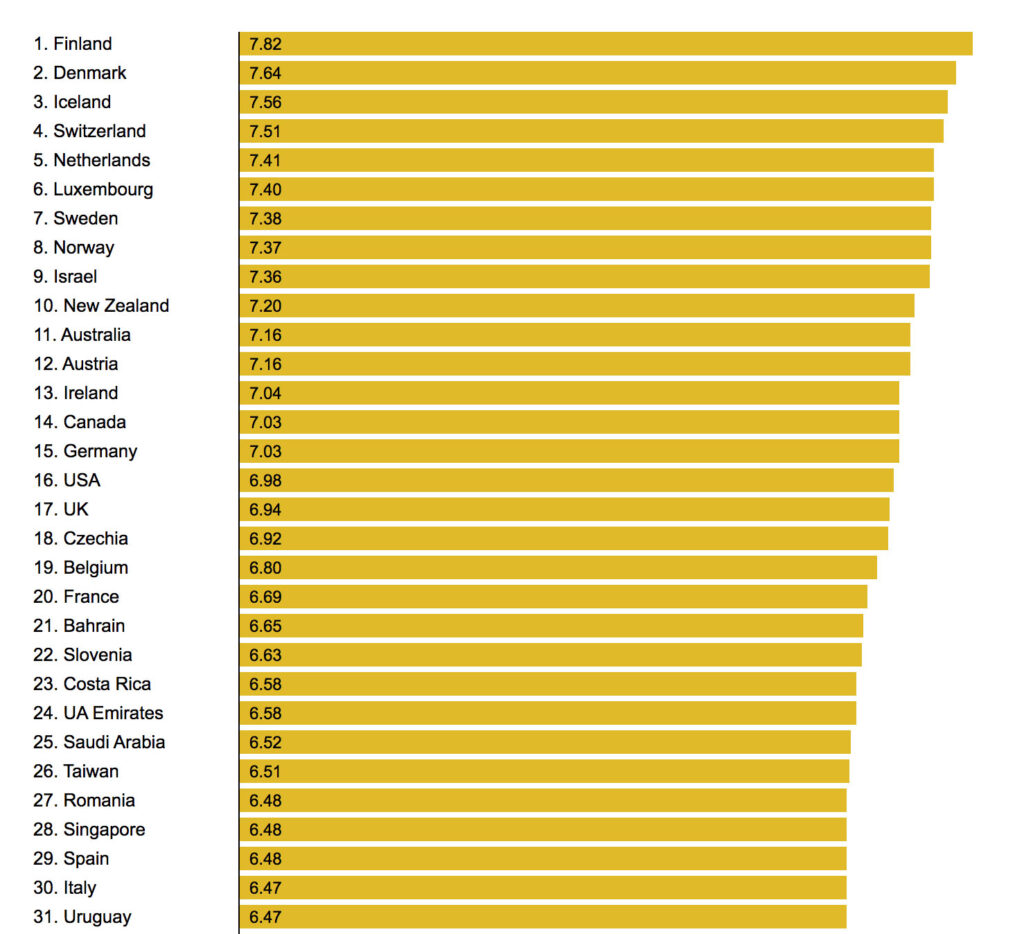
The average Happiness Index for 2021 based on 141 countries was 5.57 points.The highest value was in Finland (7.82 points) and the lowest value was in Afghanistan (2.4 points).
Speaking of work, according to a different statistic, Singaporeans are the world’s unhappiest workers. 48 percent of Singaporeans said they are unhappy with their workplace and would not recommend it as a place to work.
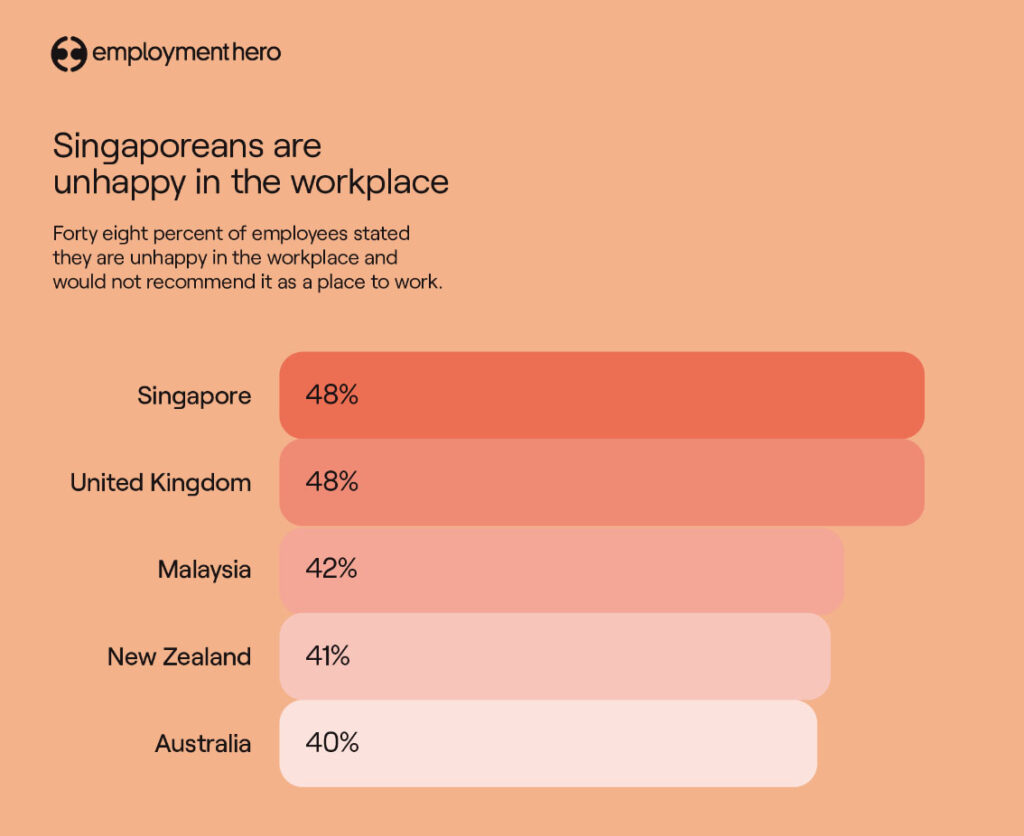
However, worldwide Singapore is only at the 27th position, behind most of the Western developed countries. I initially thought that being 27th in the world is not bad. But after thinking about it more I asked myself why only 27th place, given that most Singaporeans (although not all!) are fairly well off in terms of housing, living standards, finances and work?
Happiness Index Country rankings 2021: 0 (unhappy) – 10 (happy)

The average Happiness Index for 2021 based on 141 countries was 5.57 points.The highest value was in Finland (7.82 points) and the lowest value was in Afghanistan (2.4 points).
Speaking of work, according to a different statistic, Singaporeans are the world’s unhappiest workers. 48 percent of Singaporeans said they are unhappy with their workplace and would not recommend it as a place to work.

What makes being happy and particularly forming happy relationships so difficult? I am by no means an expert on this subject, but a few ideas came to my mind. The first reason is that people may lack basic knowledge about relationships. And until recently, I include myself in this. Going through my personal coaching program gave me insights that now seem obvious, but did not in the past.
For instance, we do not know what the other person is thinking. We can guess, but we are often wrong. Hence, it is much better to ask!
OR
When we have an opinion, we should state it as such, and not as fact.
When our partner seems troubled, we should give them the time to express their feelings, and don’t suggest quick fixes before knowing what the partners concerns are. It is often more important for the partner to be able to express his or her concerns than to get advice.
And finally, when making decisions about work and family time allocation, we should focus on our own and our partners needs, and not on how other people might judge us.
Apart from many people not knowing how to form happy relationships, our society also does not seem particularly conducive to happiness. Apart from the great demands at work (resulting in Singaporeans being the world’s least happy workers – see above), there are also the traditional gender roles as well as the family structure that may contribute to unhappy relationships.
Especially the family structure is something that in Singapore is very different from Western countries like Germany. While in Singapore children are expected to live with their parents until they get married, I moved out into my own apartment when I was in my second year in University, thanks to my mom, who found the flat for me! Living alone immensely contributed to my happiness. Coming home when I wanted to was liberating and waking up in my own place felt simply amazing. And my moving-out did not worsen, but improve my relationship with my parents.
Another major difference is that my parents never made me feel responsible to support them. In fact until this day it is still my parents who support me much more than I support them. While it is wonderful if children care for their parents, it is less ideal if the children do so because of the expectation that their parents hold.
If there is no expectation that children stay with their parents until they get married and take care of them, this creates more space for a loving relationship. The focus of the relationship changes from ‘Need to” to “Want to”. And I believe that it would be good if people take up a similar mindset in a partner relationship. All too often partners feel like they need to do what is traditionally expected of them, instead of focussing on what they want to give to the relationship.
One paradoxical effect of the high work demands that many Singaporeans experience is that they escape to spend time using social media instead of spending quality time with loved-ones or by themselves (“87% of Singaporeans spend over two hours a day on social media apps”; Singapore is the most fatigued nation in the world). Escaping to social media may be viewed as an easy way to “relax” from a tiring work day. But it is not conducive to happy relationships and feeling happy.
By re-listening to an amazing coaching conversation (The “Unconditional Love” Technique) about relationships I recently gained another amazing insight. Some people enter relationships with the wrong intention. They often are looking for someone who can take care of them, love them and create happiness for them. In other words, they put the burden on their partner to provide happiness for them. This attitude is likely to put a great strain on a relationship because these expectations are very hard to meet. And if they are not met, unhappiness ensues. A much better mindset would be to first take care of ourselves and our happiness, and then focus on giving care and happiness to our partner. If we are happy ourselves, it is easier to give happiness. And if we give happiness, we are likely to receive more in return.


This Sunday I also went skating to Changi point, ending with a swim in the ocean. I realized again the importance of breaking our daily routine in order to create happy moments!
HIGHLIGHTS FOR WEEK OF 25 – 31 JULY 2022

Departmental education retreat
Last week we had our departmental education retreat at Furama hotel. I gave a short talk, which I think had some relevant content and which was well-received by the audience. But what became clear at the end of the retreat was that I did not incite any other lecturer to change their teaching practice. Nobody asked me about how he or she can implement my proposed changes (Learning Catalytics or implementing assessments that are more useful for students). In that sense, I have failed. For my upcoming education seminar in September I must take a different approach. After all, just delivering a good lecture is of no practical use if I do not achieve any shift in the audience thinking and actions.
How I plan to achieve this in my talk is by trying to change the focus from what I am doing to what the audience can do. This means that I first need to set the right agenda by identifying and touching the pain points of the audience. And I need to highlight that the lecture is not about learning (providing information), but about thinking what every audience member can change in their teaching practice.
One interesting aspect that was being discussed in our retreat was how we can encourage our students to attend classes. During the pandemic, all classes were recorded. This led many students to develop the habit of not attending live classes, but watch the recordings in their own time. The obvious advantage of watching lectures “asynchronously” is that students can speed up and slow down the lecture as necessary.
In addition, recorded lectures proved very useful for students as they can watch the videos repeatedly, which helps greatly in revisions. In fact, one major lesson from the pandemic is that providing lecture recordings is helpful for the students and improves student feedback. And the NUS leadership has urged lecturers to continue this practice.
With all these advantages of recorded lectures, why would lecturers insist that students attend live lectures?
One reason is that lecturers feel that the students would benefit from attending live classes. For instance, the live class may include practical exercises or a lot of teacher-student interactions. I, for example, include many problem-based questions in my classes, which students spend time to think about and then discuss in groups. It appears likely that students who watch the recording of these classes do not take the time to think about the problem, but just fast forward to the answer and explanation. As a result, they do not actually practice problem-solving, which is the main goal of the activity.
Another reason why lecturers may want students to attend their classes is that Profs seek recognition and justification for their effort in preparing and delivering their lectures. I used to have this mindset. If students did not attend my lectures, I would interpret this as a personal rejection and failure, which in turn had a negative effect on my self-confidence.
I have completely abandoned this mindset. Trying to gain self-confidence based on how many students attend a class is a recipe for failure, because there could be all sorts of reasons why the students do not show up. These reasons may not at all be related to my teaching. Hence, I rather focus on making my class meaningful for those who attend my lecture.
Assuming that we want students to attend lecturer for the right reasons (to help them to learn), what strategies are there to encourage students to come for class?
The obvious one is to make attending the class mandatory (by taking attendance) or making attending de facto compulsory by including graded tests in the classes, awarding participation marks for in-class activities and or marks for class participation. Even if the motivation behind these measures is a noble one (i.e. promoting student learning), applying these external motivators will evoke resistance and decrease the odds that students will give their best.
Another approach to try to make the class interesting. The reasoning here is that if the class is interesting, students will surely attend. The problem with this reasoning is that there are a lot of things available to students that are more interesting than our lecture and it is futile to try to compete with so much more interesting content that is at the students’ finger tips. In addition, what is interesting to one student may not be interesting to another student. Thus, trying to make in-class activities interesting and fun helps, but by itself it is unlikely to result in good student attendance.
The best approach is likely to provide content or activities that the students perceive as useful and hence want to participate in. The easiest way to achieve this is to tie the in-class activities to the assessment, e.g. the mid-term test and the final exam.
What that means in practice is to simply impart in students skills during class time that they need in order to do well in the final assessments. This could involve practice exercises, discussions, case studies etc., depending on what the students need to do in the mid-term test and final exam.
One may argue that this approach could still be perceived as external motivation. However, importantly, there are no direct consequences of not attending such as a grade reduction. Therefore, it is still the students’ choice whether or not they attend the lecture.
What this goes to show is that when designing module content, we really have to start with the assessment, and then devise ways to use the class time to prepare students for the final assessment.
HIGHLIGHTS FOR WEEK OF 18 – 24 JULY 2022

Movie: COACH CARTER
While on holiday with my parents in Germany, I watched an interesting movie, “Coach Carter”. The movie is the story of a basketball coach who managed to transform a Californian high school basketball team, the Richmond Oilers, from one of the worst in the state to one of the best teams within a few months. But much more than this, he transformed the lives of his players. And during the process, he earned no gratitude. Instead, he faced hostility from players, parents, the community, school teachers and even the school principal for trying do something bigger, that would make a real difference in his players’ lives.
Coach Carter was not interested in only achieving temporary success during the annual basketball season. He thought about how a successful basketball season could be the foundation of a meaningful future for the students. He realized that the only way that this could happen was by ensuring that the students also did well in school. In fact he had the students sign contracts to maintain a certain GPA score in order to remain on the team.
However, Richmond High School is situated in a socially highly disadvantaged neighborhood. The school was notorious for students not showing up for classes and for high student dropout rates. When the inevitable happened and the student report cards were showing high absence rates and low GPAs, coach Carter came up with a radical measure. He closed the gym and canceled critical games until grades improved.
The school principle told Coach Carter: Unfortunately Mr Carter, both you and I know that for some of these kids this basketball season will be the highlight of their lives”, to which Carter replied “I think that’s the problem, don’t you?” There ought to be more in life for these kids.
The movie illustrated that when we have a vision, it is normal that there will be many who resist. The reason is often because people are unable to imagine what the future could be like, because they cannot anticipate the opportunities that the future might bring. It is the task of a leader to “lead” others to destinations that they cannot imagine and to recreate his vision in his/her followers.
As we go about being leaders, be it a coach, a teacher, or a leader of people in any other area, we are likely to experience criticisms and resistance. The question is whether we want to be criticized for doing something ordinary or for doing something extraordinary.
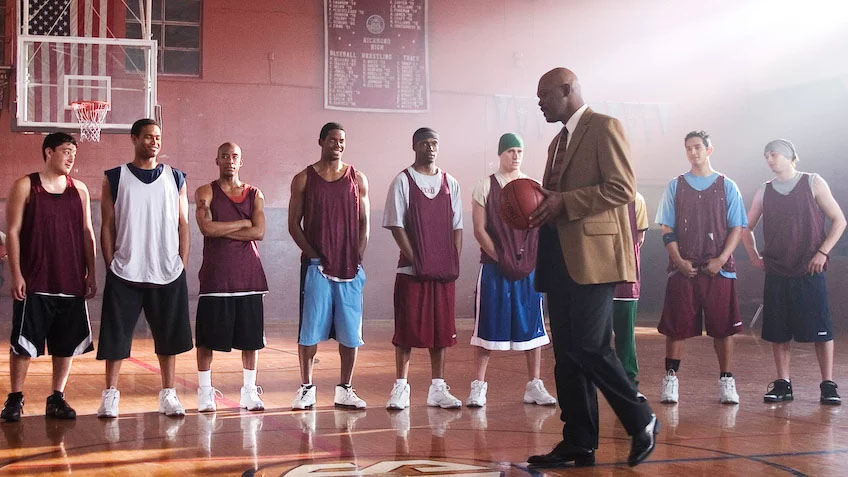

HIGHLIGHTS FOR WEEK OF 11 – 17 JULY 2022

It is rare that we still remember our dreams in detail when we wake up. It is even rarer if our dream teaches us an important lesson, like this one that I had while being back home in Germany.
A DREAM
There was a war raging. It was a most terrifying war. A war of black people against black people. Black people were led out from their apartments, children, whole families, and killed. Even in the apartment block where we lived we could witness what was happening. In our basement their were body bags with people who have been killed. It was the most scary experience to witness. And there was the American army who fought the black criminals, who fought to end this massacre of innocent lives.
And then there was me with my girlfriend (which does not exist in real life). We came back home and as we approached the apartment door, there were boots in front of our door. And as we came closer, an American women soldier came out. And I remember that she had blonde hair, and I did the unthinkable. I killed her with a series of shots.
I wrapped her body and decided to place her into the basement with the other body bags in the evening. I was worried about the weight, but for some reason the dead body felt light.
We went back into town, to learn from the Americans that the fighting was under control, except for a few pockets in different parts of the city. I returned home, asking my girlfriend to follow later. But when I got back home the body bags in the basement were gone, and I could no longer hide my crime by just placing to bodybag with the American soldier there. And it was then that I realized that I needed to confess my deed, and felt this big feeling of relief. I rushed back to tell my girlfriend. I looked on the streets and in the movie theatre, but I could not find her. Suddenly she appeared next to me and I told her what I realized I needed to do. She replied “At last I hear a good decision”. And I woke up from my dream.
Waking up from this dream and realizing that it was a dream felt like a huge relief. But more than this, I was thankful for this dream, because it taught me the lesson of honesty in a way nothing else ever has. Being faced with a difficult and consequential situation led me to make a wrong decision, but in the end I realized that living with dishonesty is the worst consequence.
When I woke up from the dream, it was one hour after my intended wake-up time, cutting short the time I had for my morning work routine. But I did not mind, because I felt happy to have been taught an amazing lesson by my dream.
I also thought about another aspect related to this dream, which is that the evil people were black. The fact that I unconsciously seem to associate evilness with being black is likely not a coincidence. which brings me to a podcast that I recently listened to.
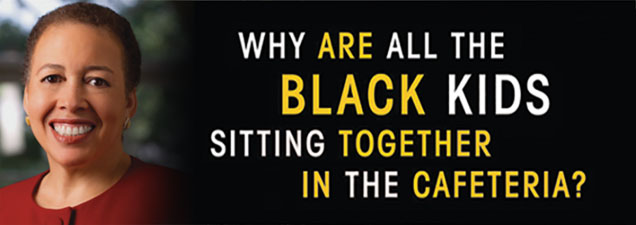
HIGHLIGHTS FOR WEEK OF 4 – 10 JULY 2022
Why are all the black kids sitting together in the cafeteria?
I recently listened to an interesting Science podcast, which included an interview with Beverly Tatum. Beverly is author of a book with the interesting title: “Why are all the black kids sitting together in the cafeteria”, which is on my future reading list.
In the interview, Beverly made a number of points that really got me thinking.
For instance, Beverly discussed that the most common form of racism is not black people or people from other races being harassed or disadvantaged. The most common form of racism is very subtle and often not always recognizable, especially for people who are privileged to not experience this type of racism. For instance, for a black man it is a common experience to be followed around by a security guard in a shop, to be treated less friendly by a cashier, to be worried about being stopped by the police when driving. These are types of stress that a white man does not have to worry about and does not even notice.
Thus, just because two people have a different racial background, their everyday experiences are likely to be very different. I would hence think that one result of these differences in daily experiences is that it is more difficult for disadvantaged racial groups to experience happiness.
Many people would of course say that they do not show these sentiments towards other races, but treat everyone the same, and I would include myself in this. However, my bias about other races and nationalities is often unconscious. For instance, if I meet someone from a developing country, I have certain expectations about the education, motives and interests of that person. I of course try not to show it, but the bias is there, even if it is unconscious. If a member of a less privileged race or developed nation does not fit this stereotype, it must be very tiring and frustrating to always have to prove him- or herself, or to think that they have to prove themselves.
Being German means people will always assume that I am well-educated and embody a certain culture. I could not imagine how it feels if Germany was an underdeveloped country and I would have to prove every time that I am different from the stereotype that people have about my country.
Beverly calls this the concept of racial immunity – people like myself being immune to many challenges that others face daily. This makes life easier for some and more difficult for others.
What we can do is to acknowledge our bias, because that is a prerequisite to take steps to avoid it.
What is also a transparency for members of a more privileged racial group (including myself) is that there is a salient hierarchy solely determined by someones skin color or origin, which results insome people being treated differently than others. It is a part of every day socialization. It is something that is there, but we don’t think about it, we even don’t recognize it.
What makes this worse is that even when we notice these racial prejudices, we tend to suppress discussing them. When dealing with adults, we pretend that racial prejudices don’t exist. If children ask about race-related differences between individuals, we give them the message that this is something not to talk about.
As Beverly points out, if parents do not talk about racial differences openly and do not preempt false beliefs and perceptions, then children learn about race differences and the associated stigmas and prejudices from how society treats people from different races. As a result, kids interpret the organization of society and where they belong through a racial lens. This leads children to stay closer within their racial group because it is natural to be attracted to people who share a similar experience.
I have actually previously written a post about this topic. Re-reading what I wrote made me realize that I was a victim of the major misconception highlighted in the podcast and in what I discussed above: “Racism is not just about individual acts of meanness.” It is to a large part about our unconscious bias. We connect better with people of similar background, and may favor them. As a result, people who are different feel left out.
Finally, the podcast interview made me realize that I tend to be reluctant to recognize my privilege. I tend to explain my success with my hard work. In my previous post I wrote that I do not feel privileged because I worked hard all my life and took many sacrifices. What I did not realize is that someone else who would have done the same may not have succeeded because of his race or background.
This week I published a new blog post – “A case for avoiding convenience and seeking challenges”

Lifelong learning
In Singapore there has been a push in recent years to promote lifelong learning. This is of course a good thing because it can promote economical progress and add meaning to people’s lives. However, one question that I have been asking myself is why is life-long learning something that needs promoting?
My recent trip to Germany reminded me that when I visit a coffeeshop or ride a train in a major city in Europe or in the US, chances are that I will see many people reading, working or writing. In other words, they are “learning”. If I go to a coffeeshop here or ride on the subway, it is less likely to see people learning. Most people seem to be chatting, watching movies or playing games, with the exception of students. Hence, with this post I wanted like to find out what makes promoting life-long learning something that needs to be promoted. In other words, why is it not something that people are naturally inclined to do?
The reason most commonly stated is that school takes the fun out of learning by focussing on achievement instead of the joy of learning. It is good to see that the Singapore government and Universities are taking steps to change this by introducing more inquiry-based learning and by trying to de-emphasize grades.
However, there are likely other reasons. One potential reason is that many people make a clear separation between work and free time. Work is primarily viewed as a way to make money, not as something to enjoy. By this reasoning, the last thing one would want to do in his or her free time are things related to work. Instead, people might prefer enjoyable activities in which they spend the hard-earned money, in order to provide a mental justification for working so hard.
In recent times, with the rise of electronic communication and an increasing trend for people to work from home, there has been a breakdown of the separation between work time and free time. Even after work, people still spend much time to think or engage in work-related matters. Being engaged in work-related activities even during leisure time adds stress to our lives if we view work as a burden.
It would hence be helpful to take a differentstance towards work by thinking of it as something that should be enjoyed. Investing time to engage inwork-related tasks would then become a source of enjoyment and satisfaction.
There are various factors that have been shown to be important to make work more enjoyable, such as having autonomy, feeling competent, feeling cared for by a good team, having opportunities to be creative, to improve and to make an impact. Not every job has all of these aspects, but we even if they are present, not everyone recognizes or takes advantage of the characteristics and possibilities of his or her job.
A good example is my friend Karim who recently visited Singapore with his family. Karim is a doctor and runs a general practice and endocrinology clinic. When I was a medical student, I used to view running a clinic as something that is very tiring, repetitive and routine. But Karim feels it is super fun and interesting, because he gets to solve mysteries every day and he is able to learn about his patients, not only their specific health problems but also their bigger issues and figure out how all is connected to each other. This is a good example of how our attitude, perception and approach determines to a large part how satisfied we are with our work.
I am very lucky to have a lot of the above-mentioned qualities in my work, including autonomy and freedom. As a result,I have the great luxury that I can see my work and my leisure time as a continuum and do not separate the two. Not everyone may be so lucky, but even if some qualities are absent from a job, we can often take steps to create them.
Apart from looking at work differently, I believe that one other factor that plays a role in life-long learning is culture. For instance, in Europe there is a culture of self-improvement. Trying out new things and learning new things is always an important conversation topic and contributes to people’s social status. This creates social incentive for people to advance themselves.
It is interesting that Germany has had for more than one hundred years an affordable school system to promote adult learning, the popular Volkshochschule (people’s colleges). Here, anyone can take heavily subsidized courses in virtually any area one could think of. In fact, as a student I used to take courses in sculpture and wool works, but sadly I recently threw out the pictures of things that I made …
But here is a picture showing young men taking singing lessons in a Volkshochschule in Germany in the 1920’s!
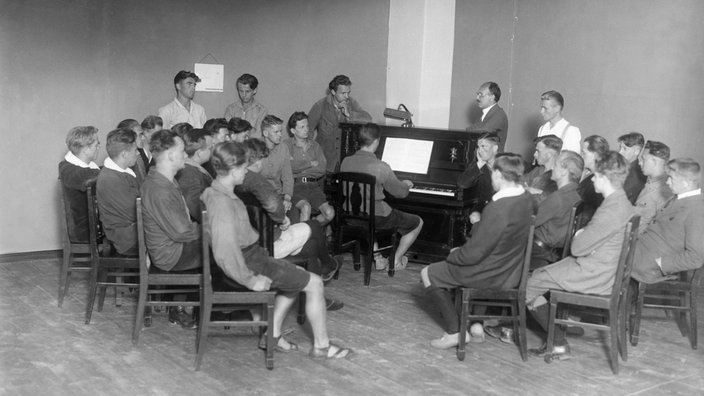
But here is a picture showing young men taking singing lessons in a Volkshochschule in Germany in the 1920’s!


